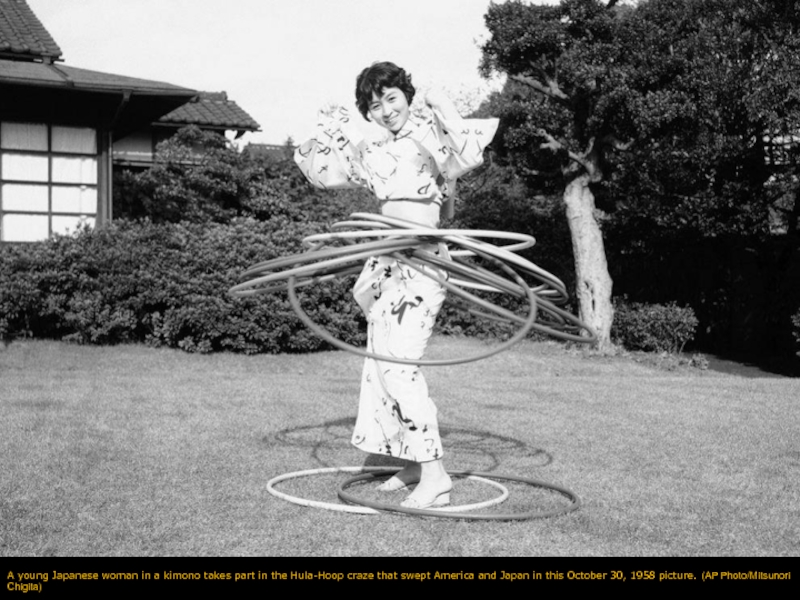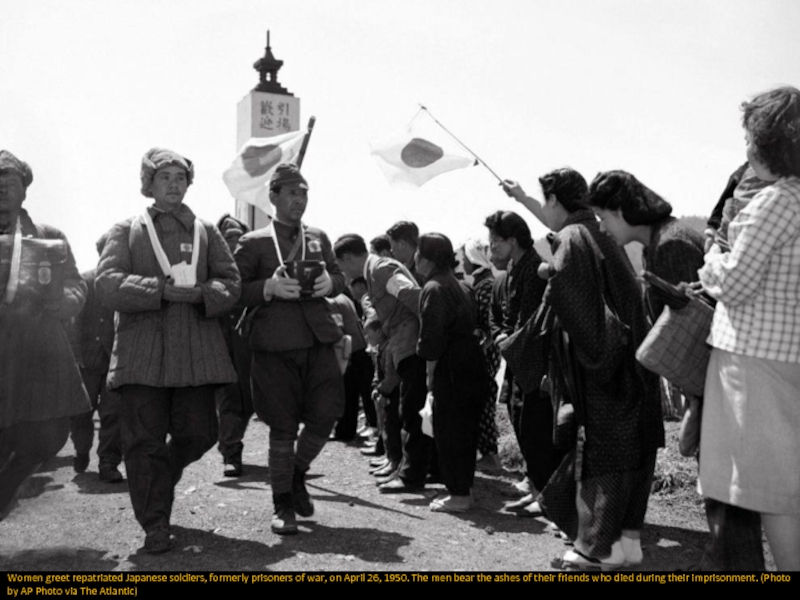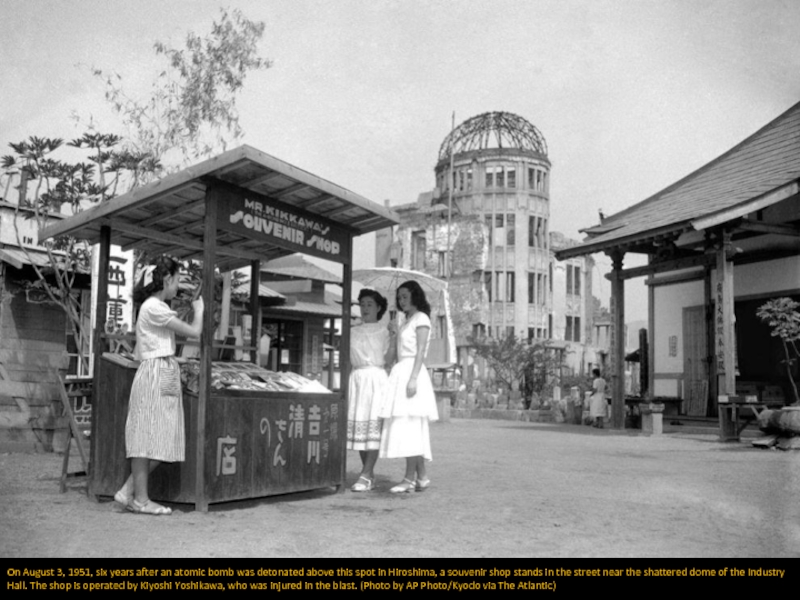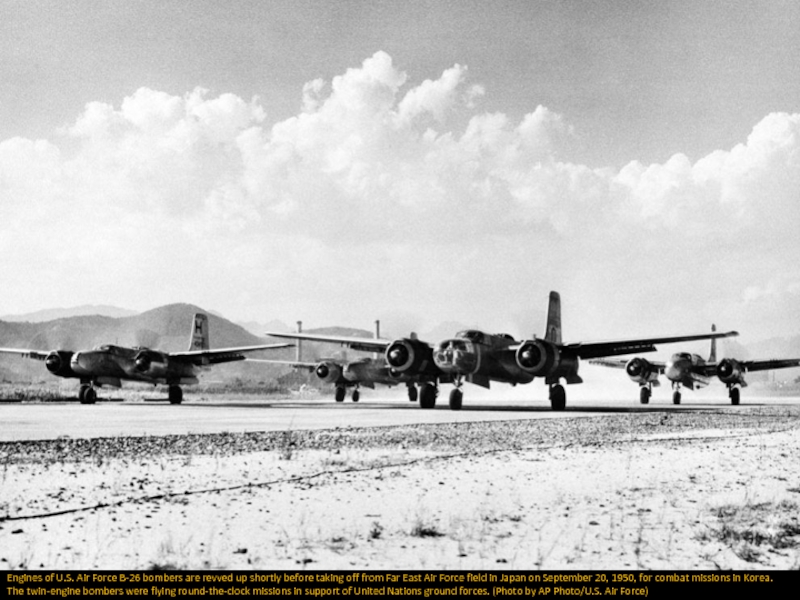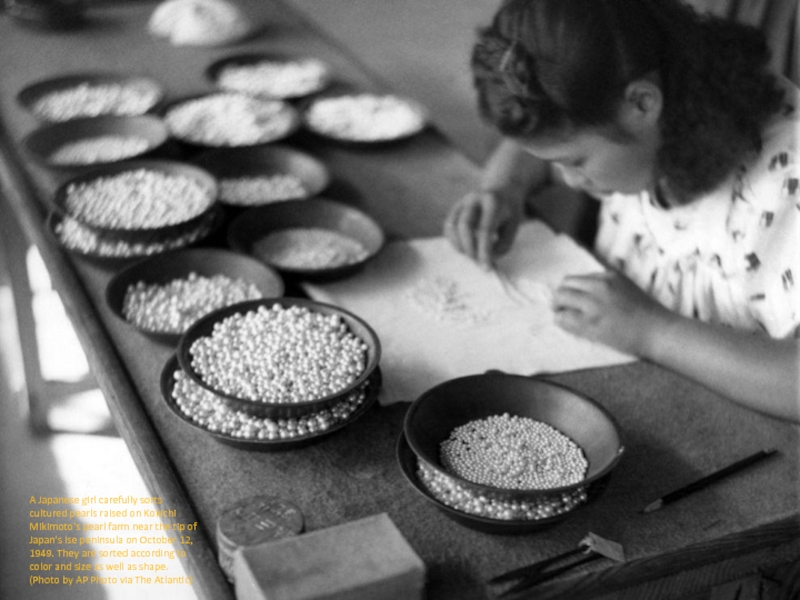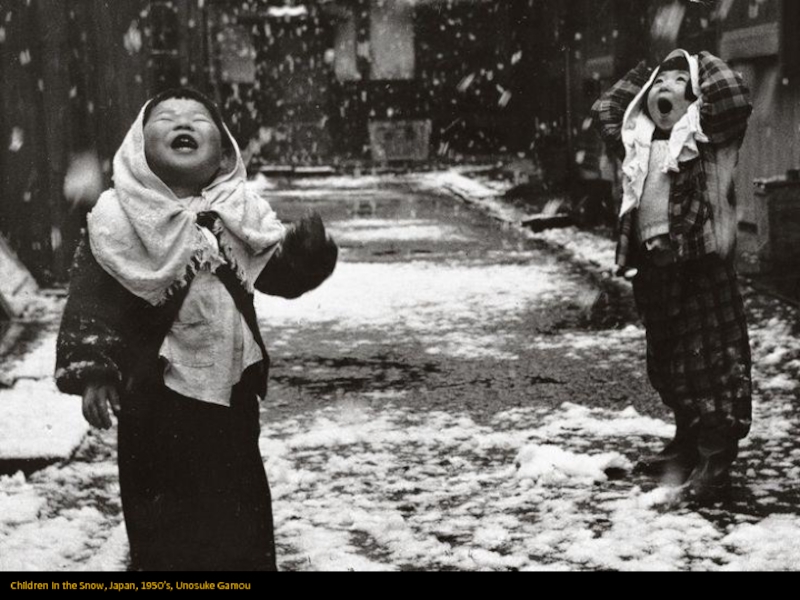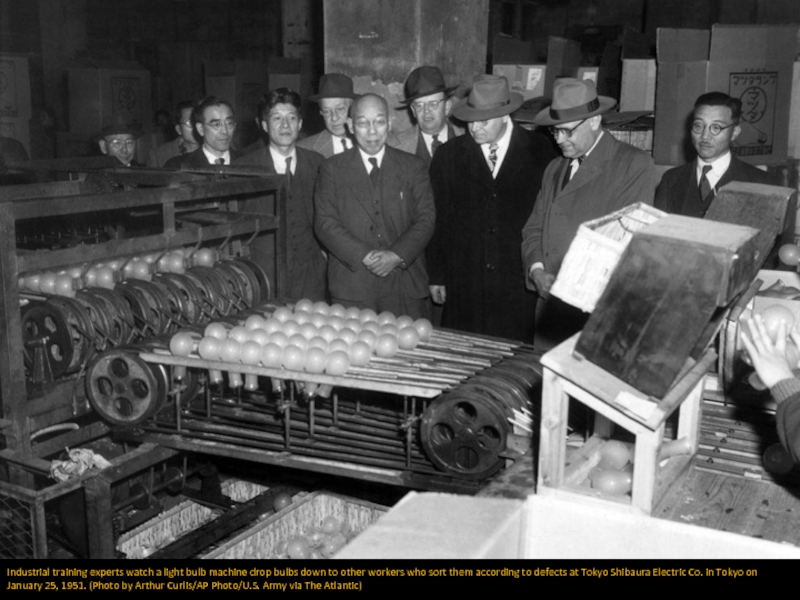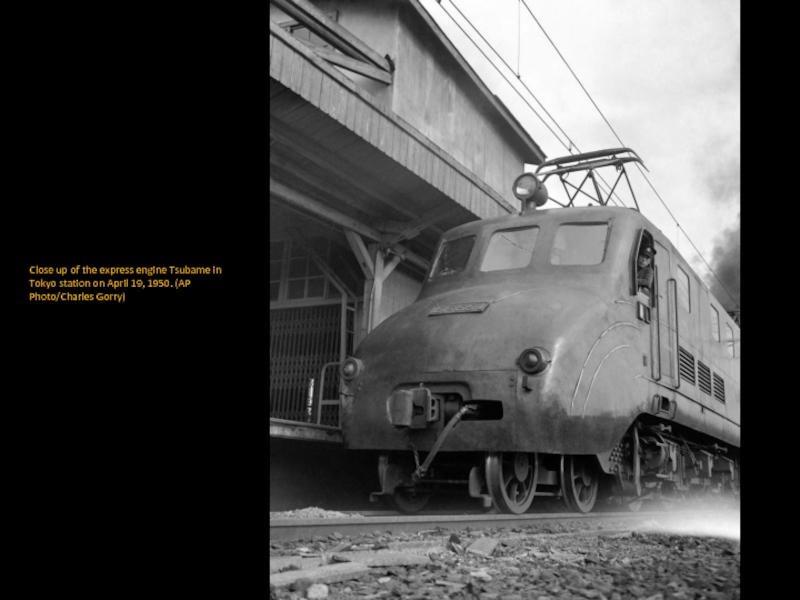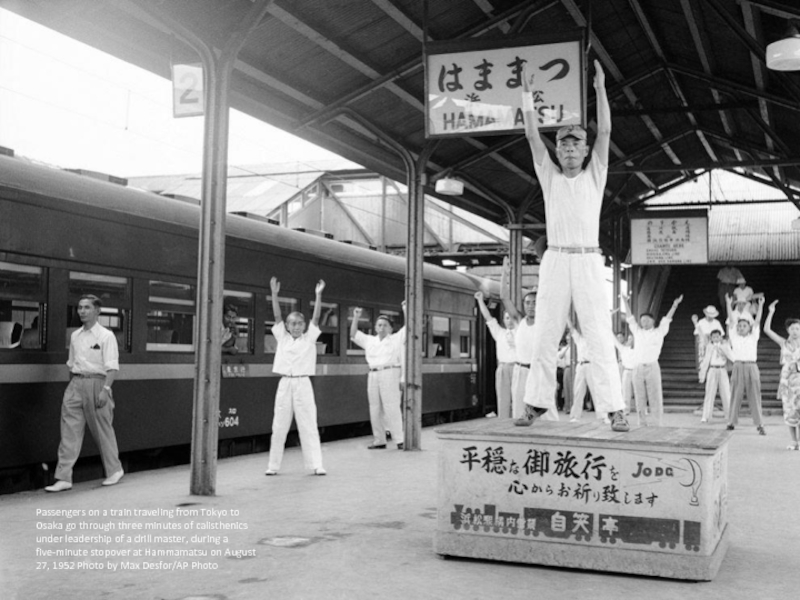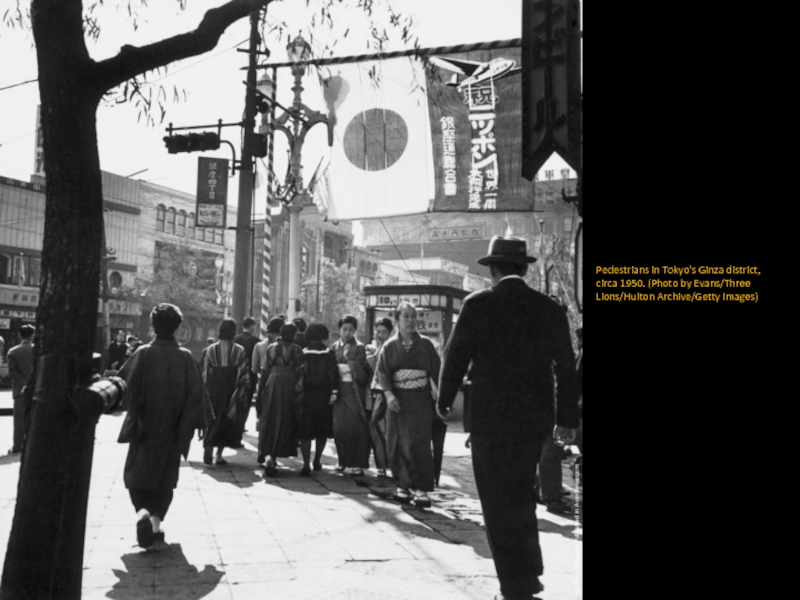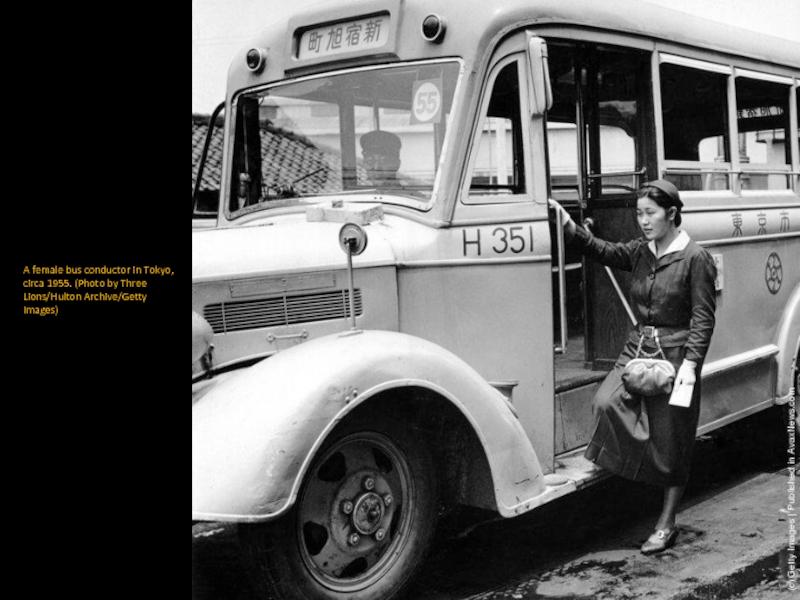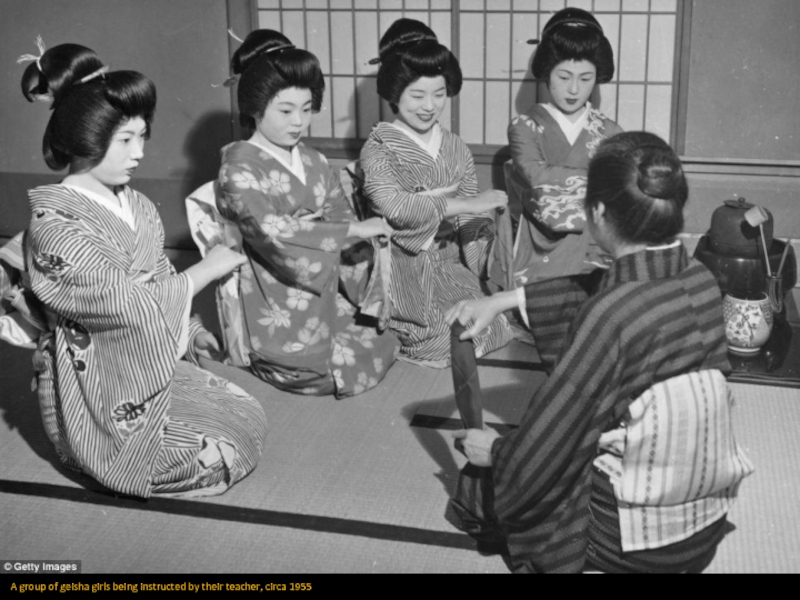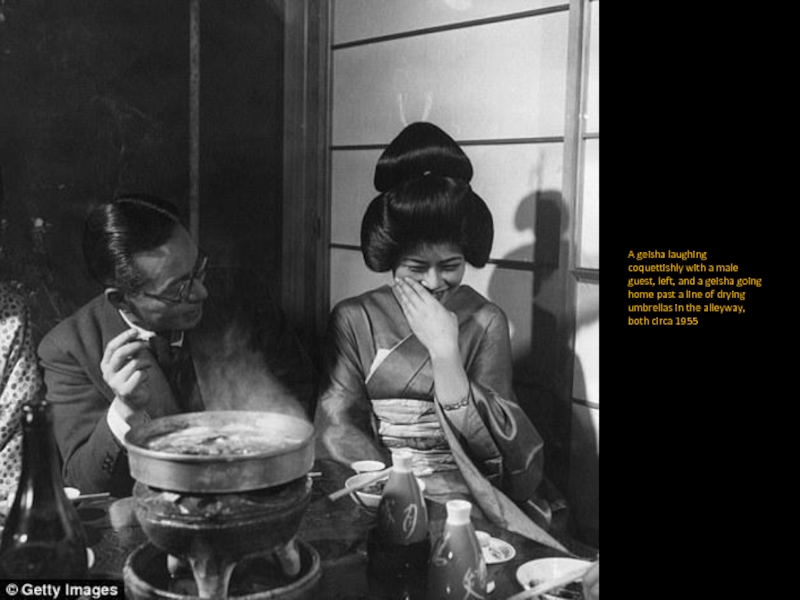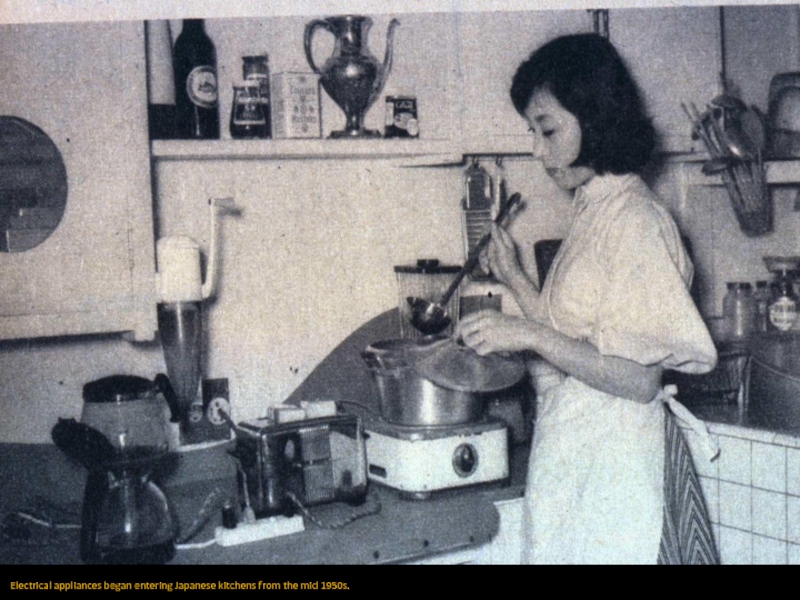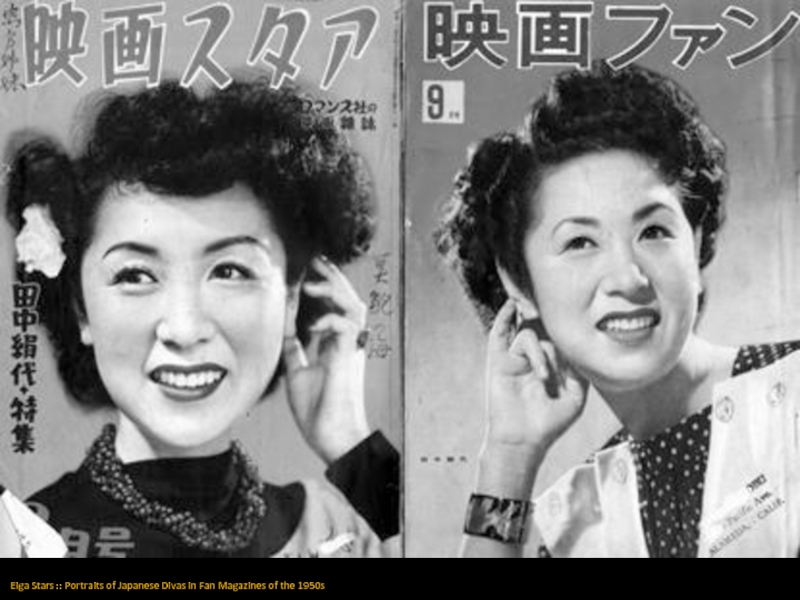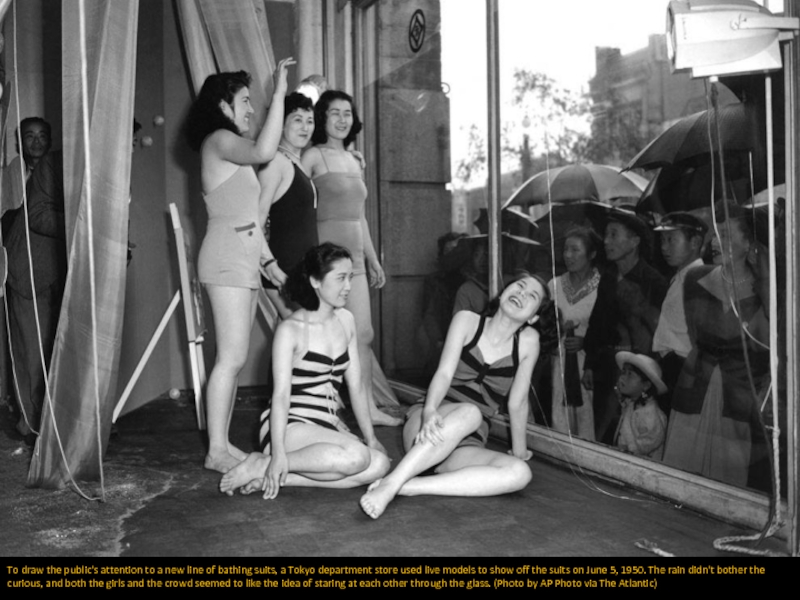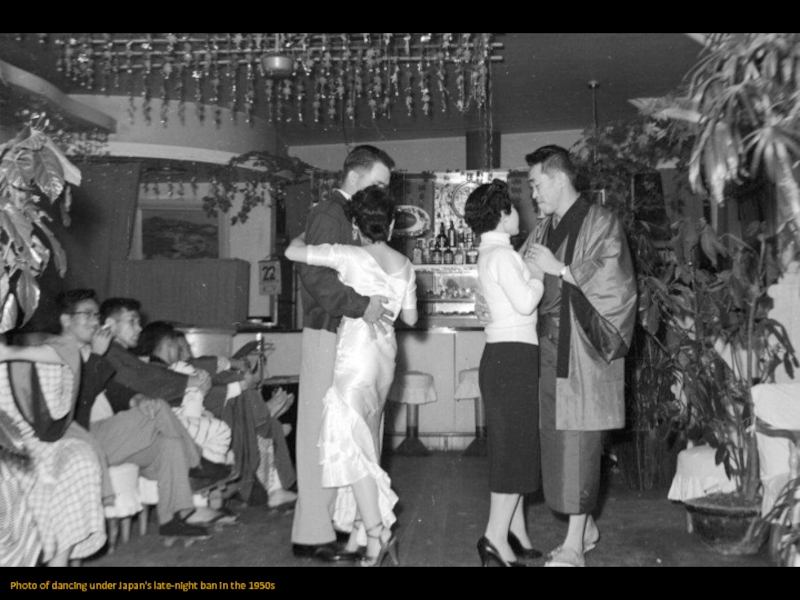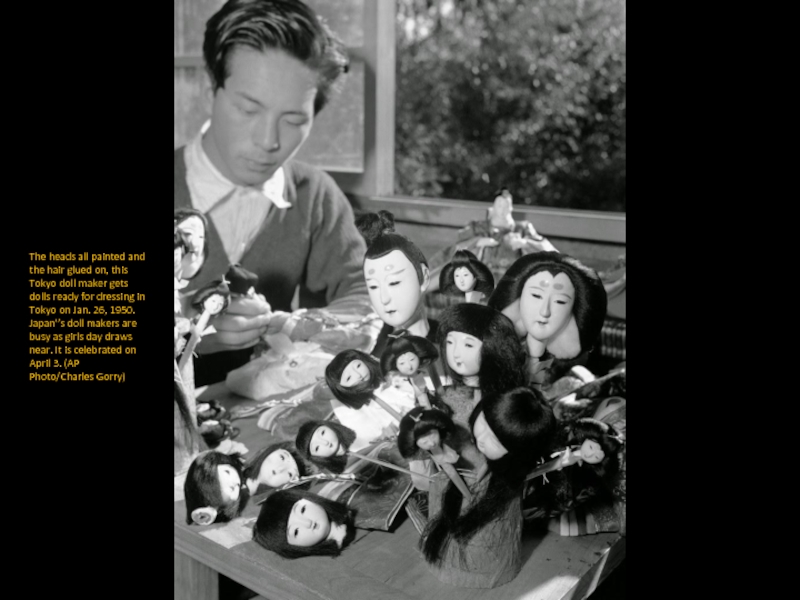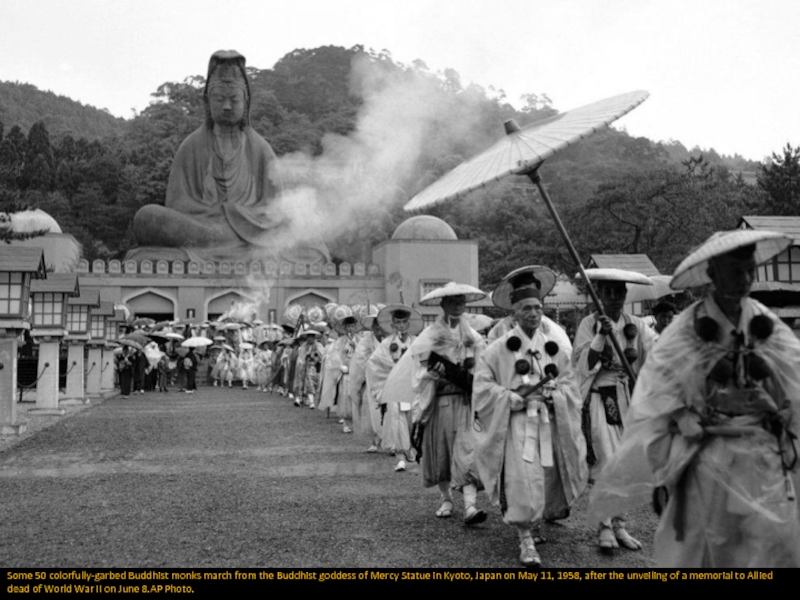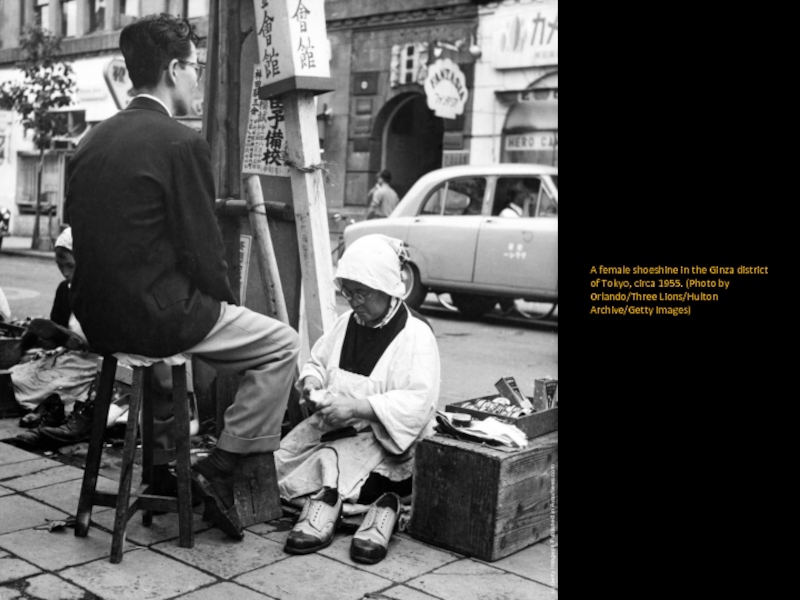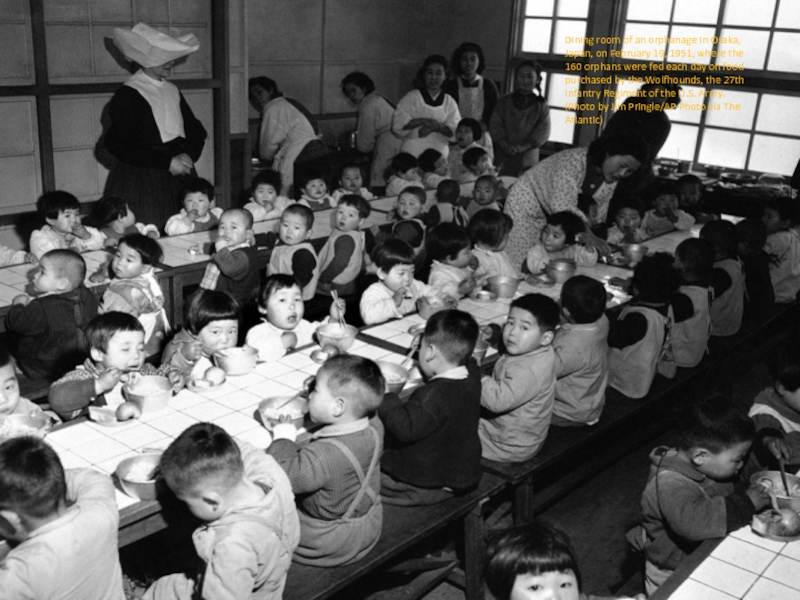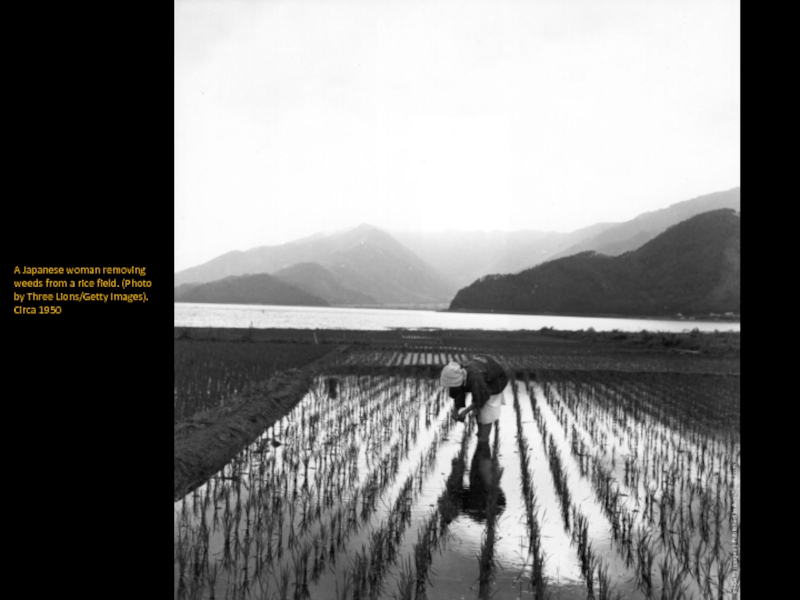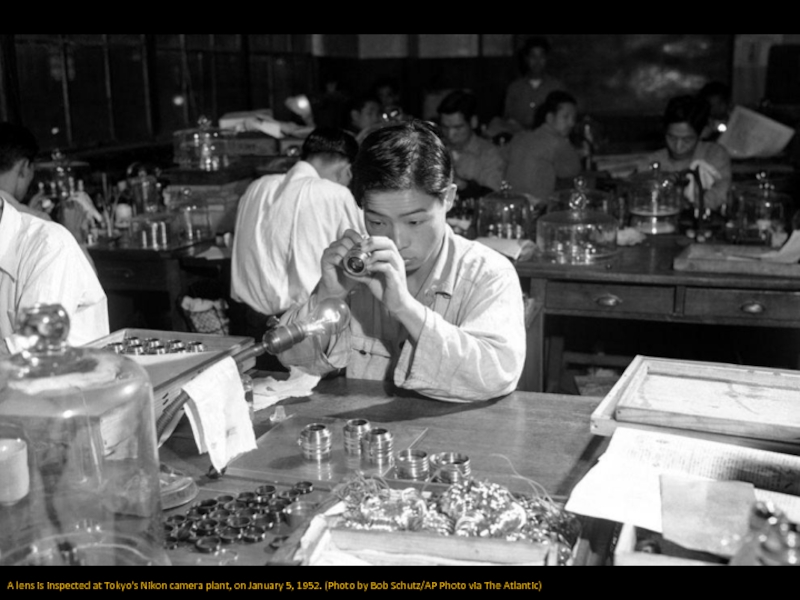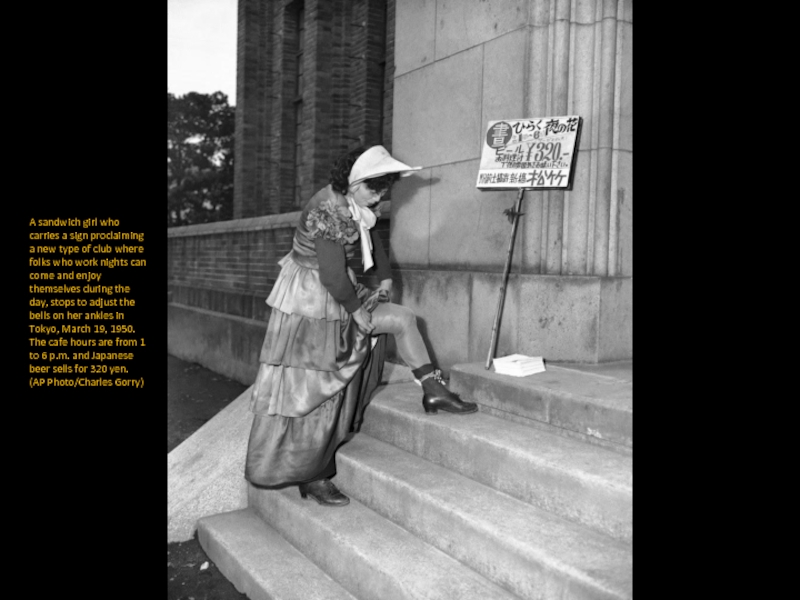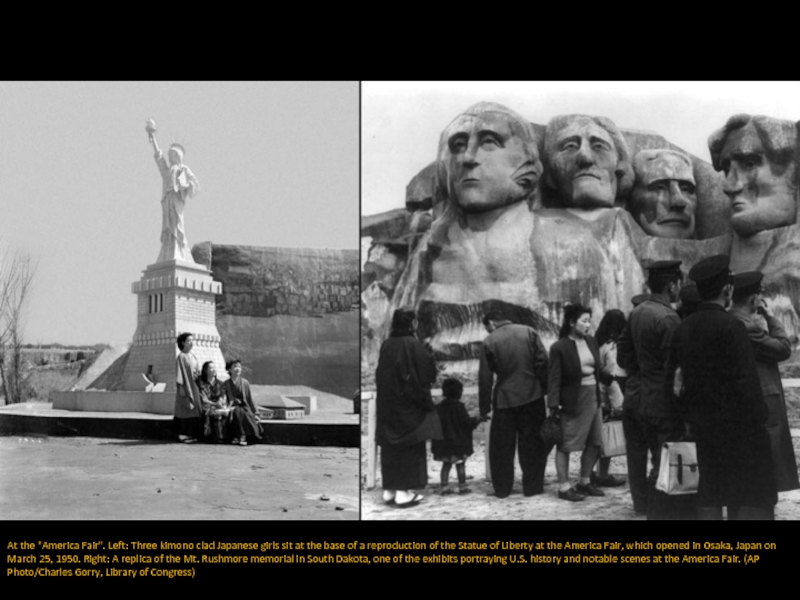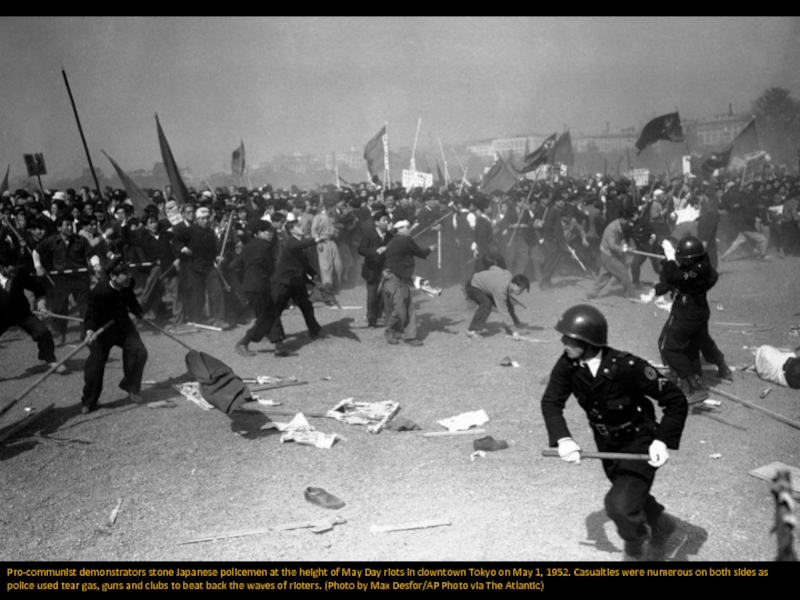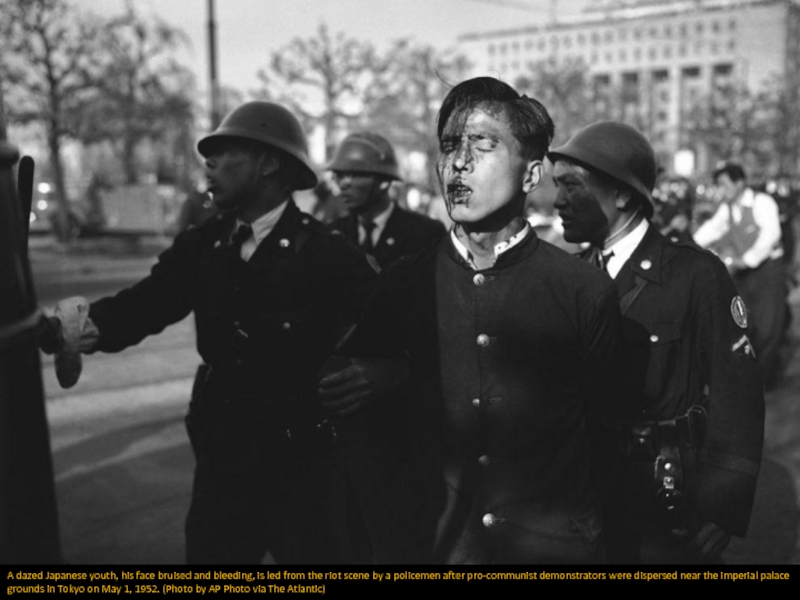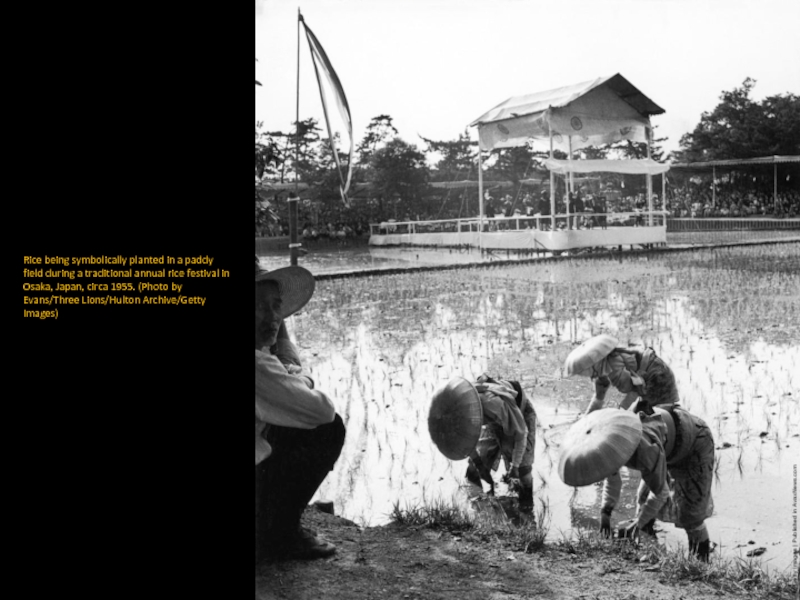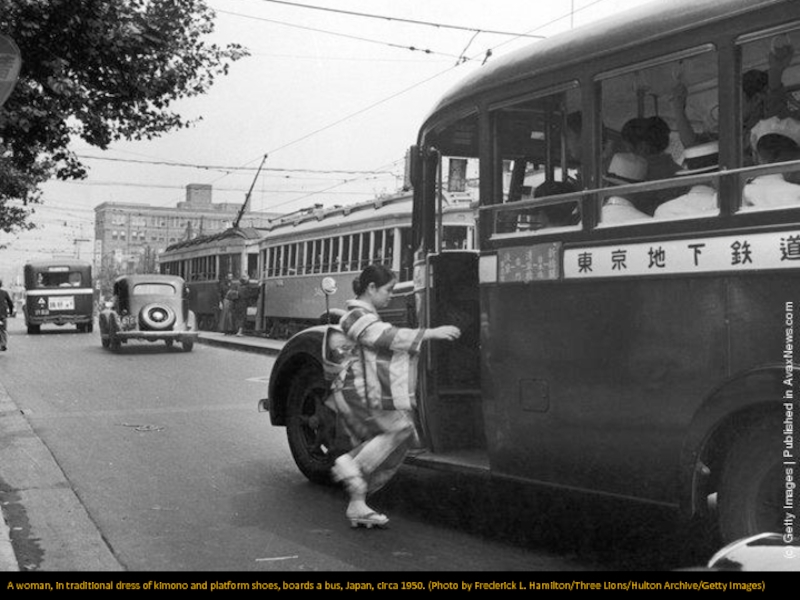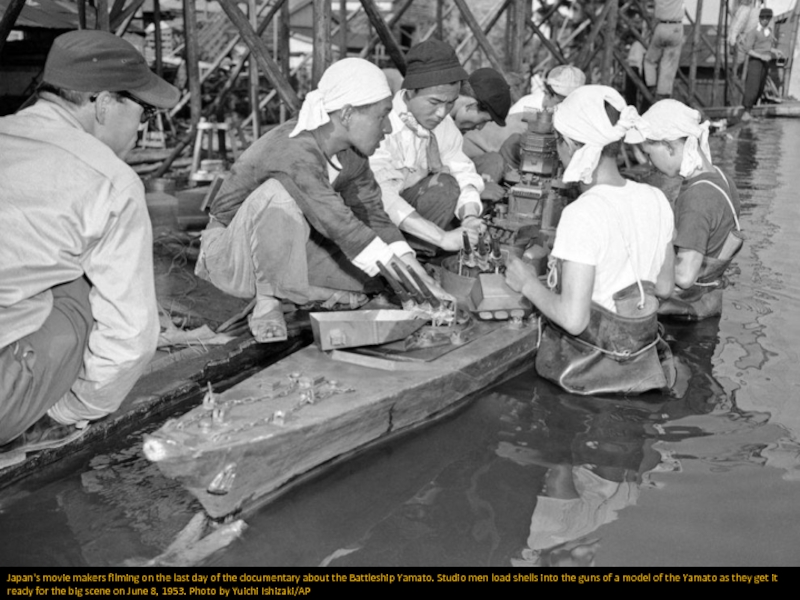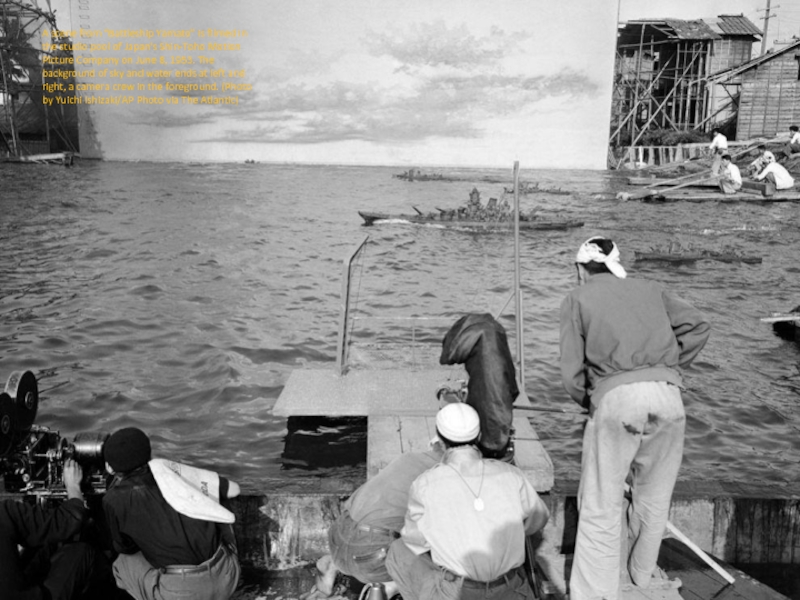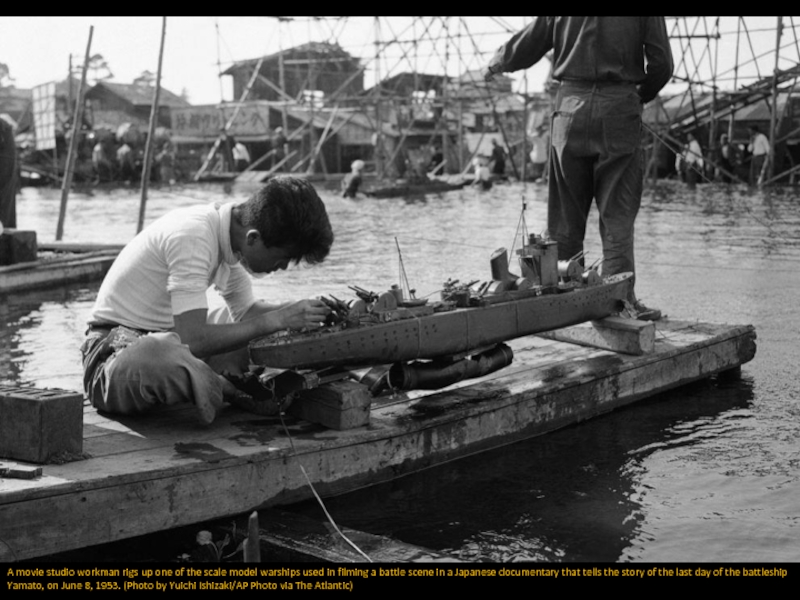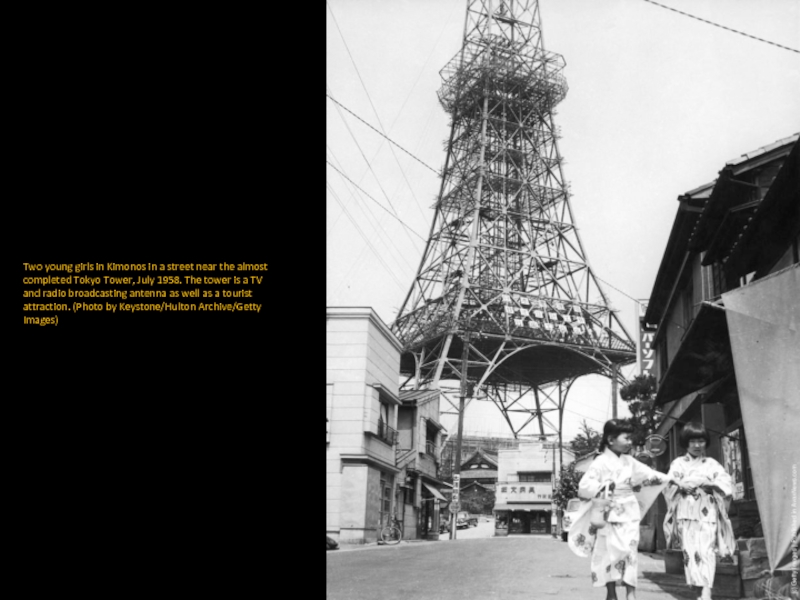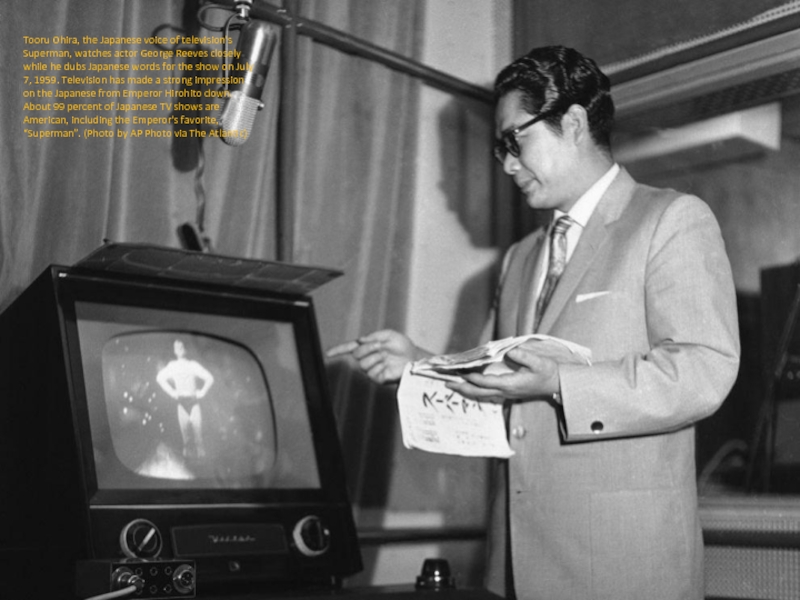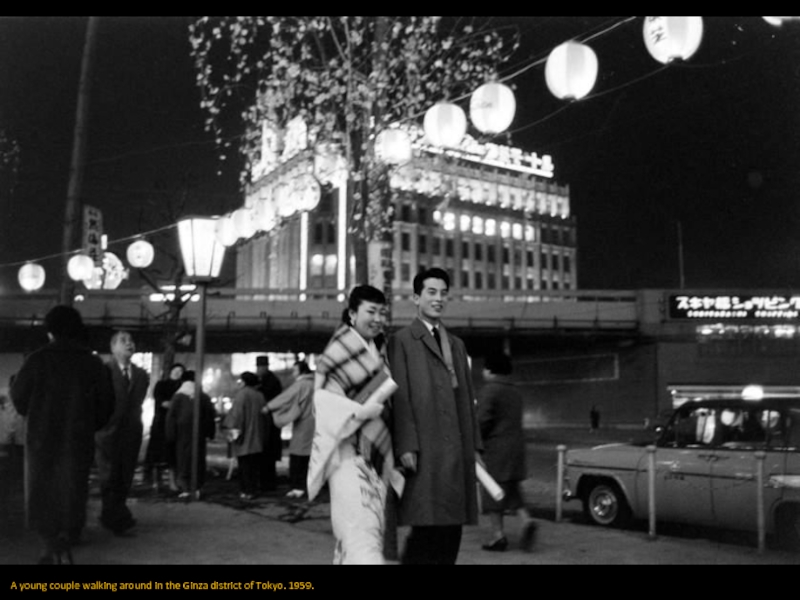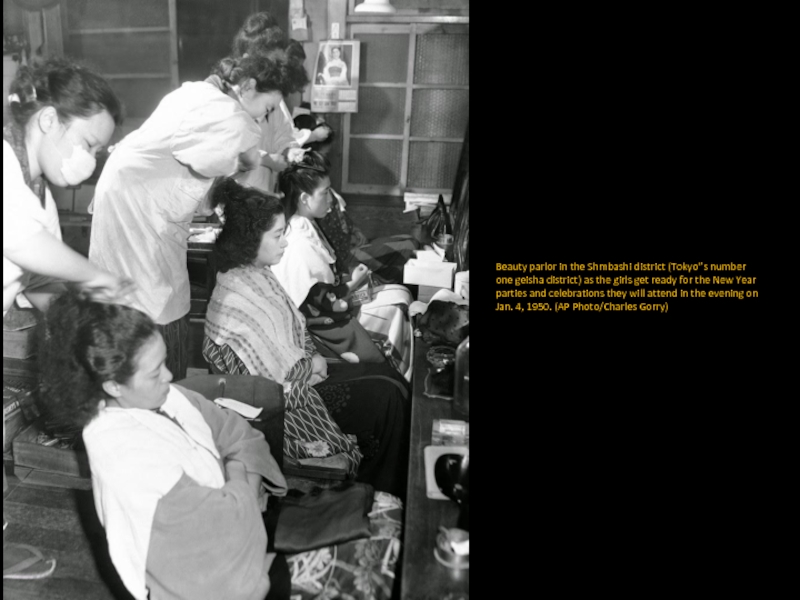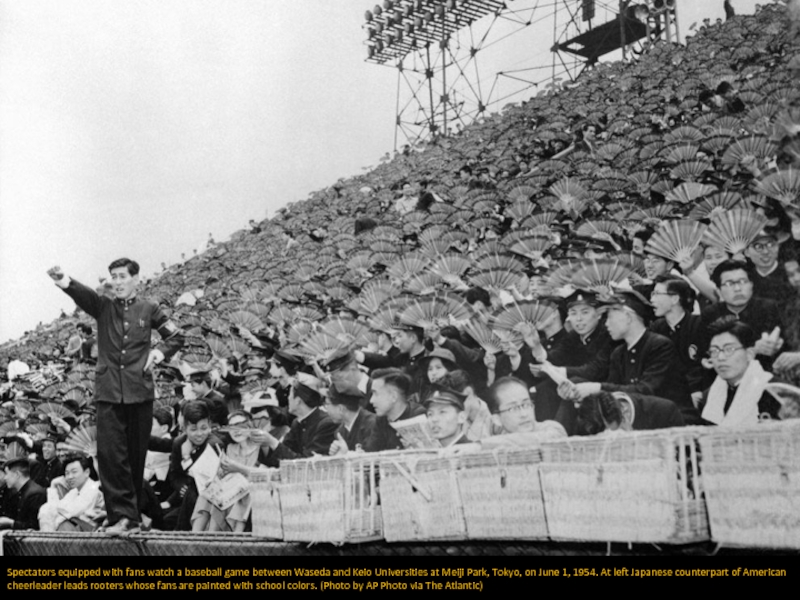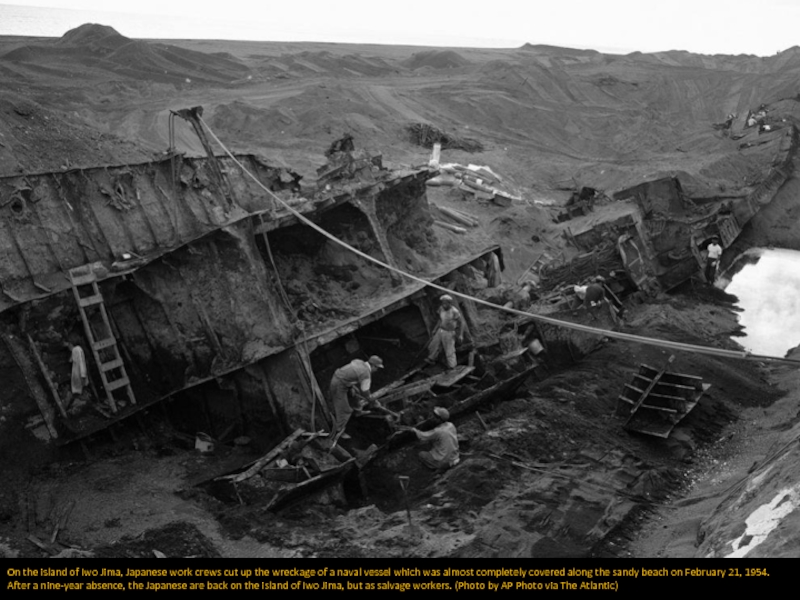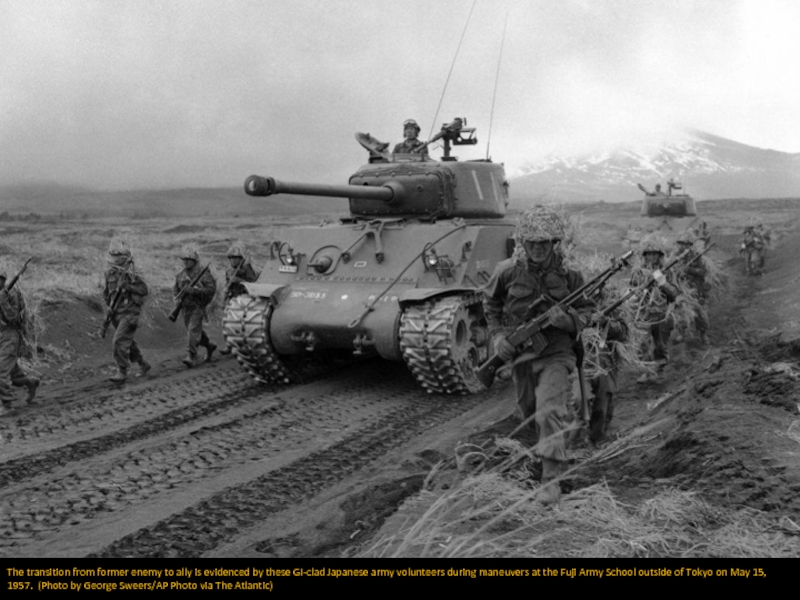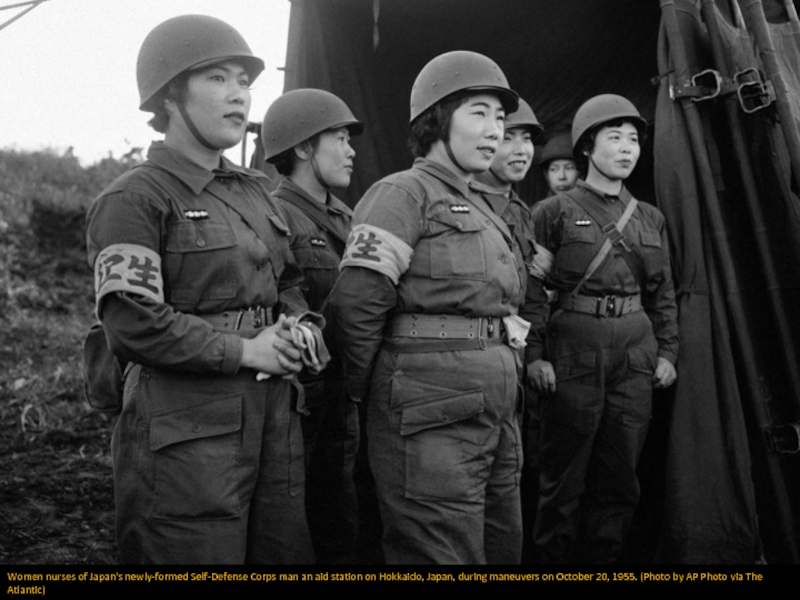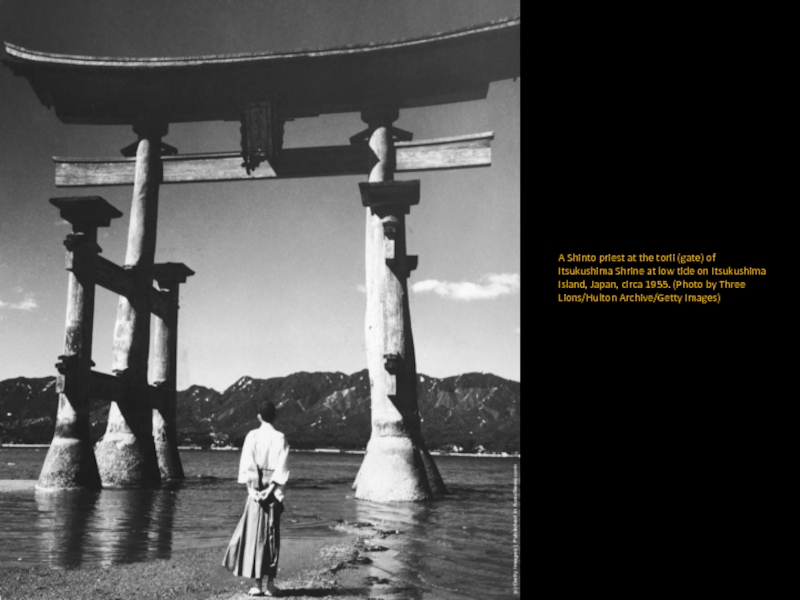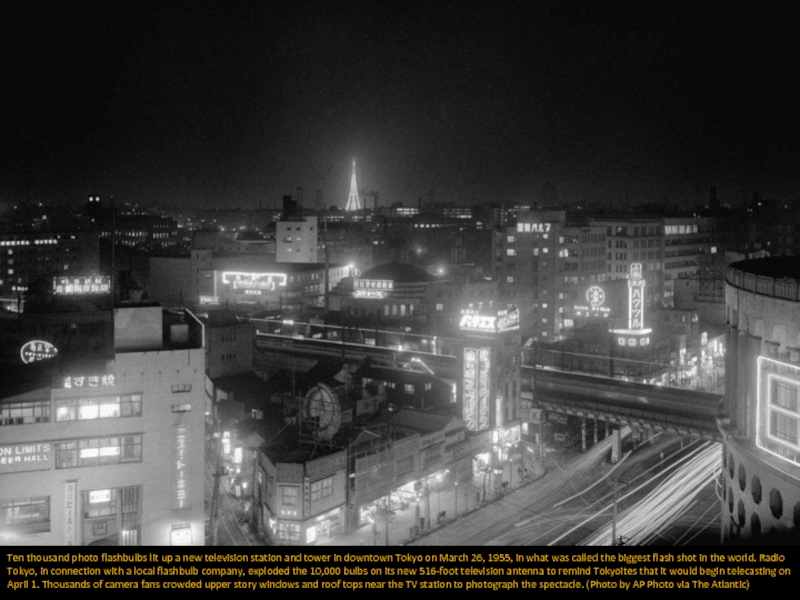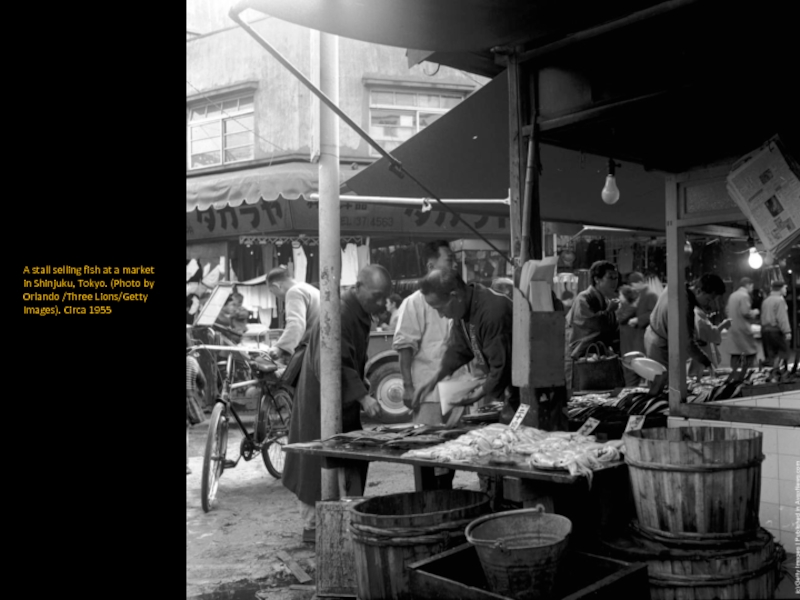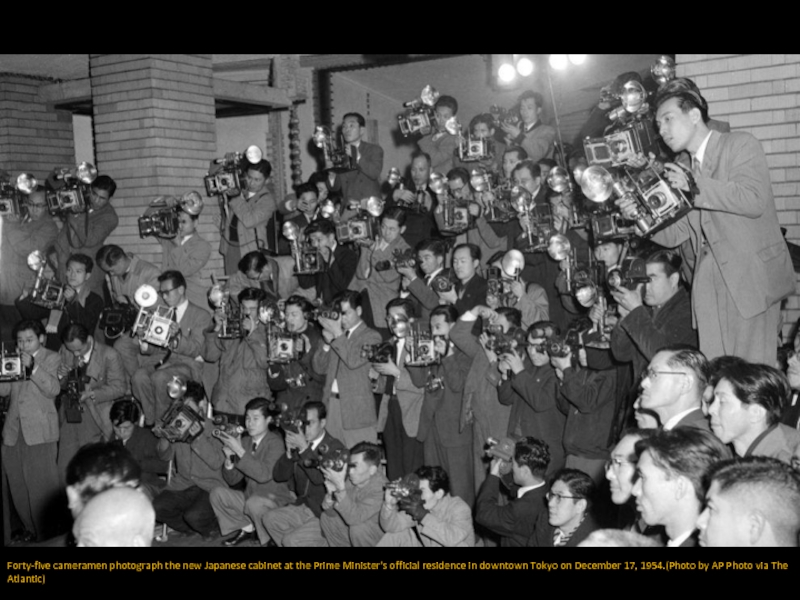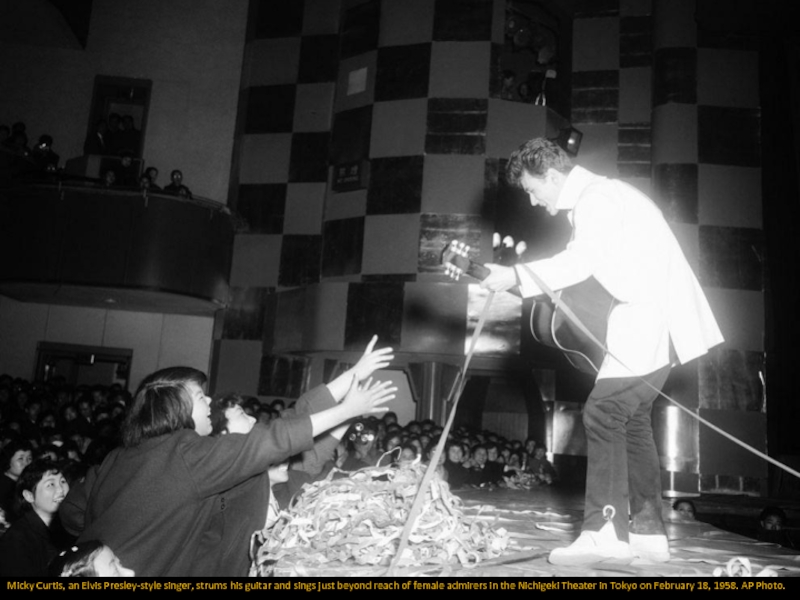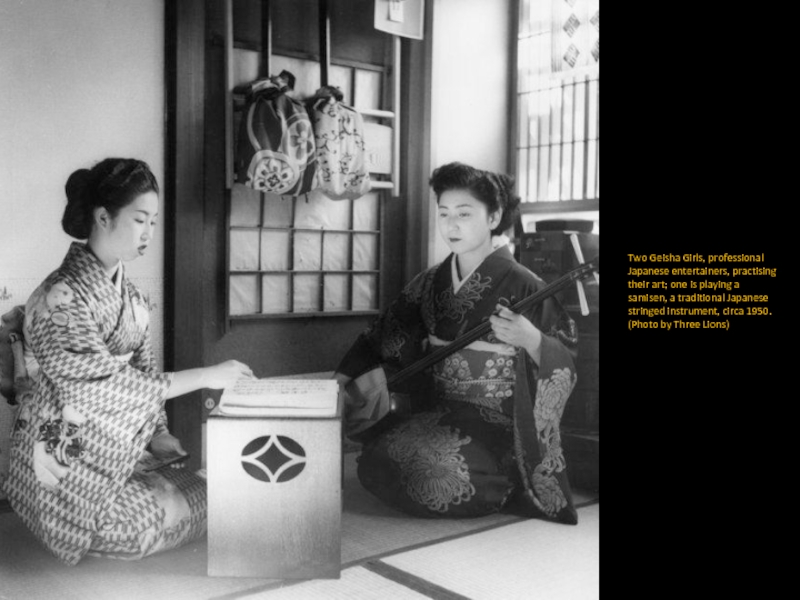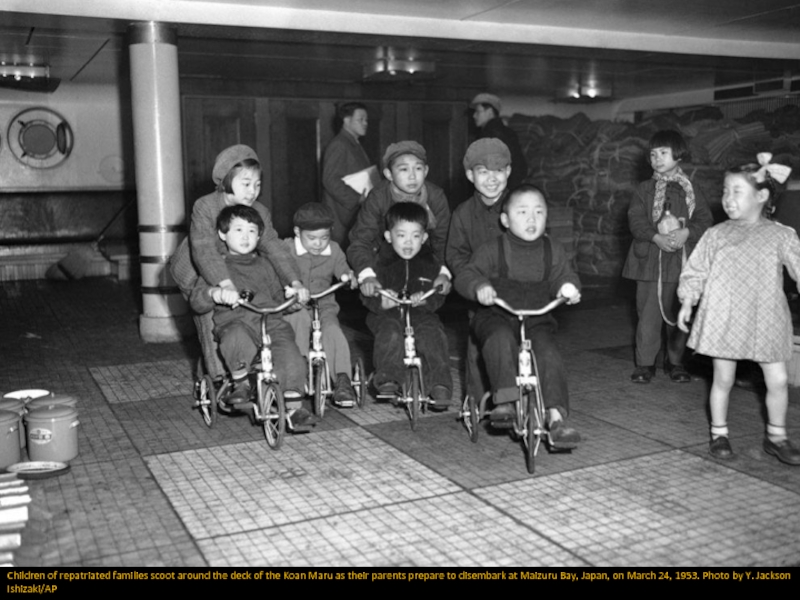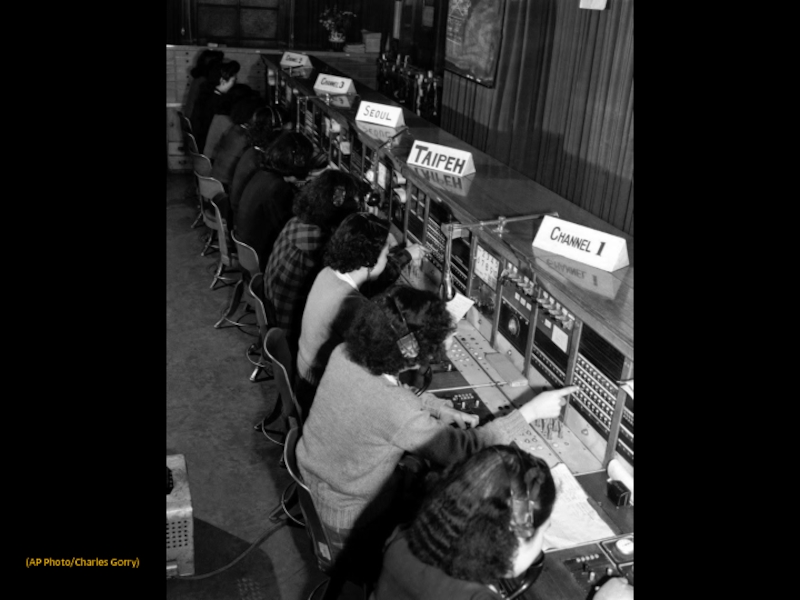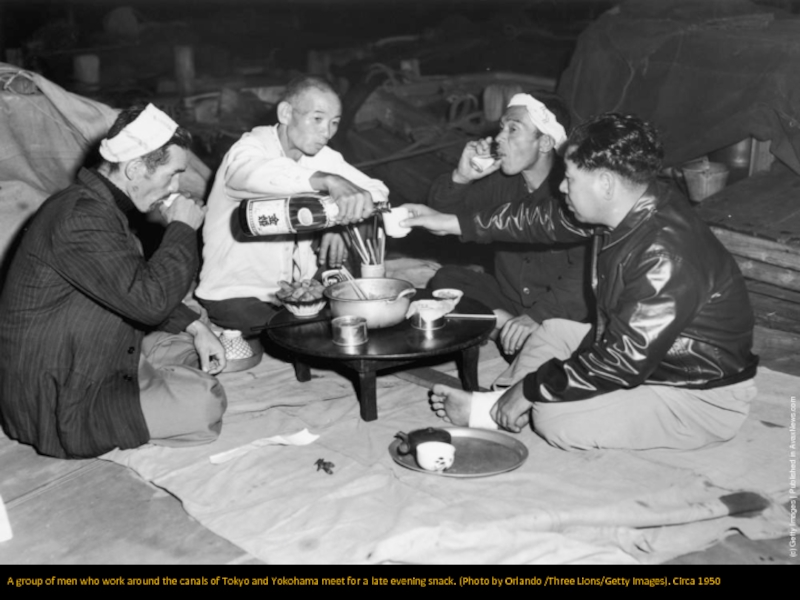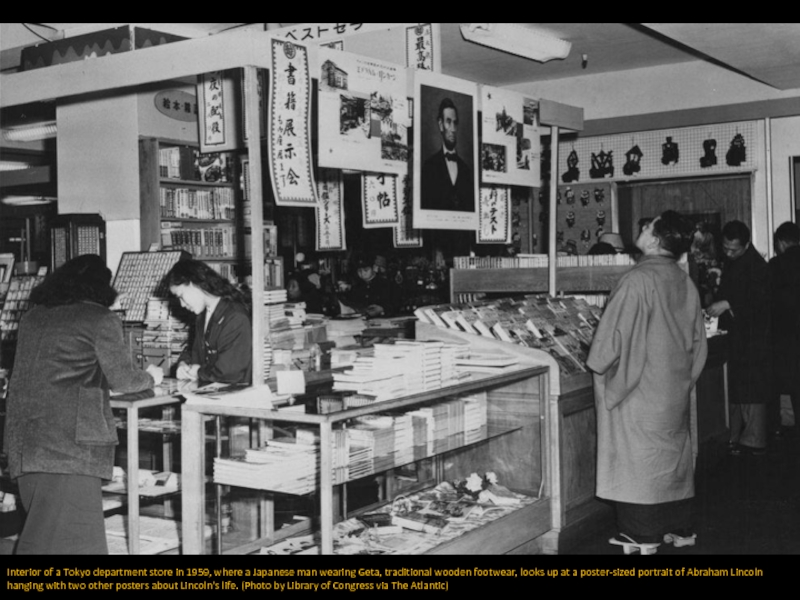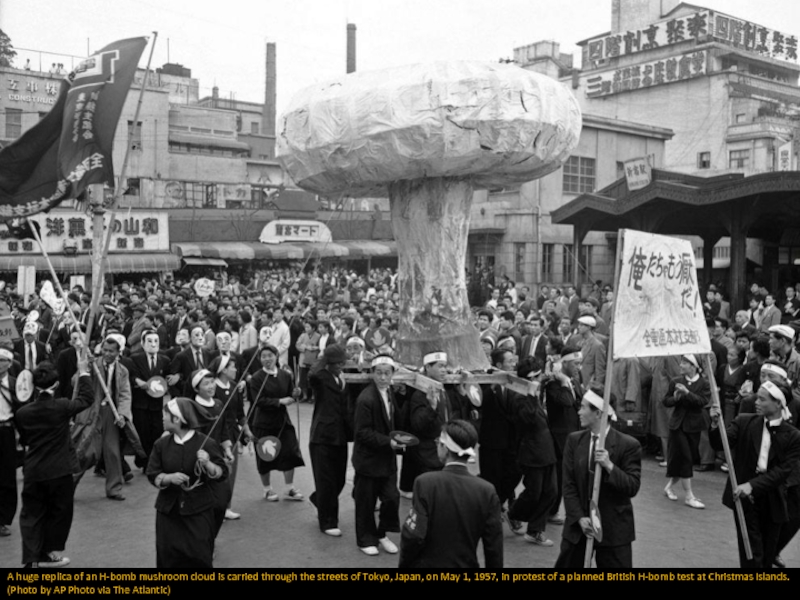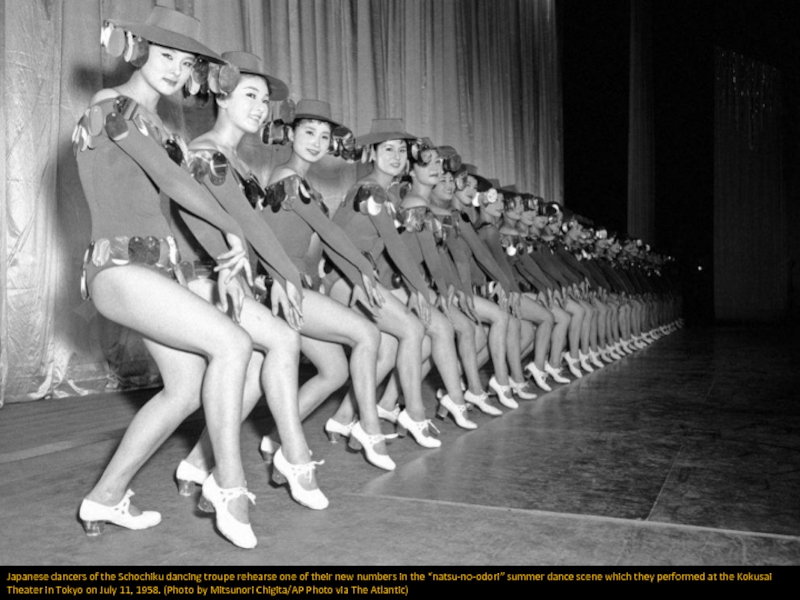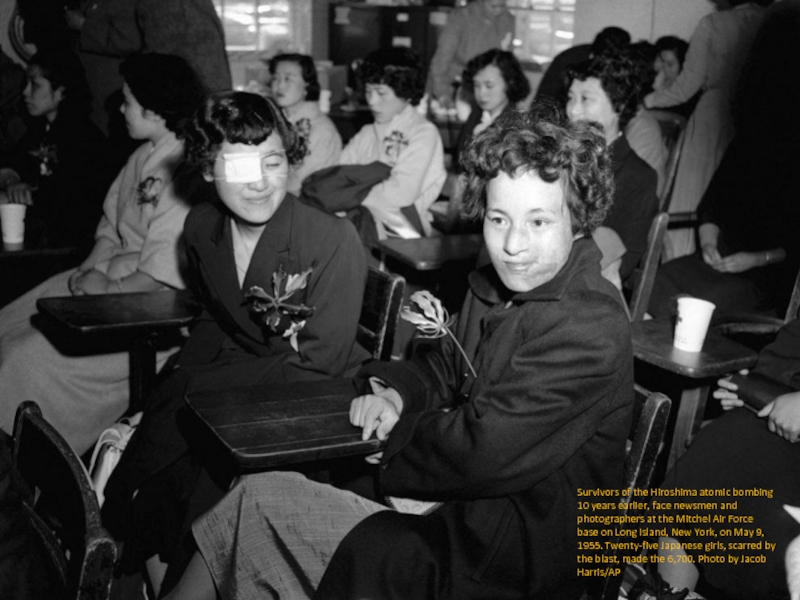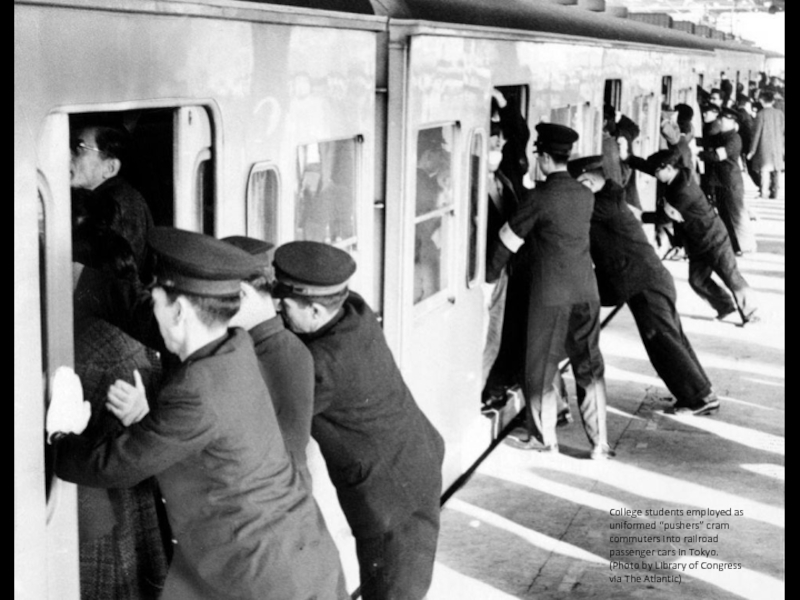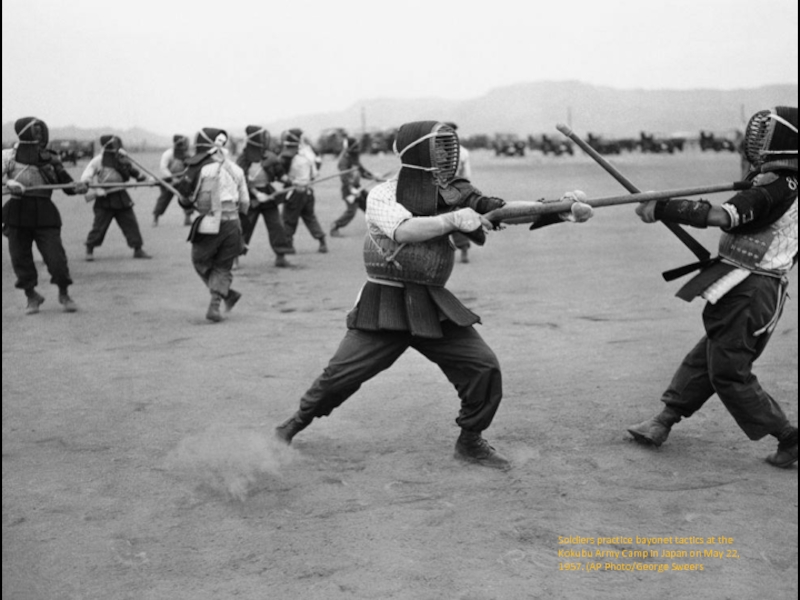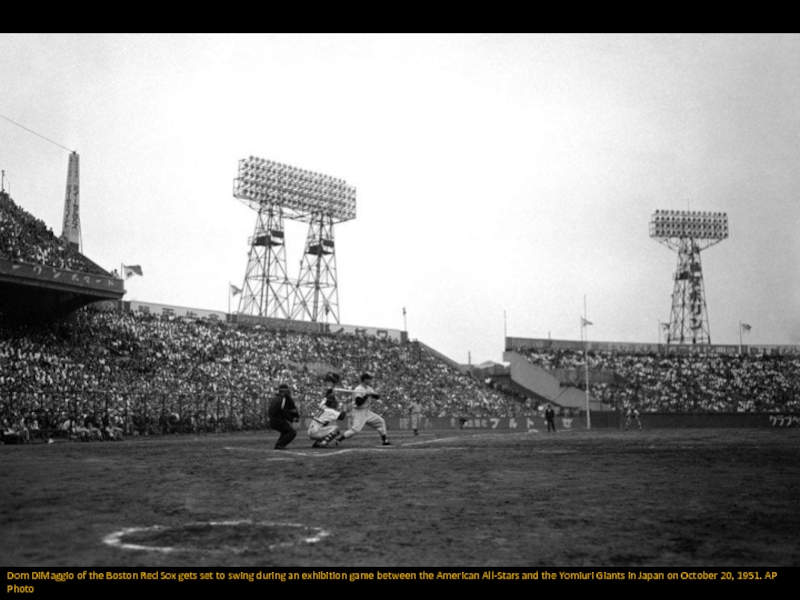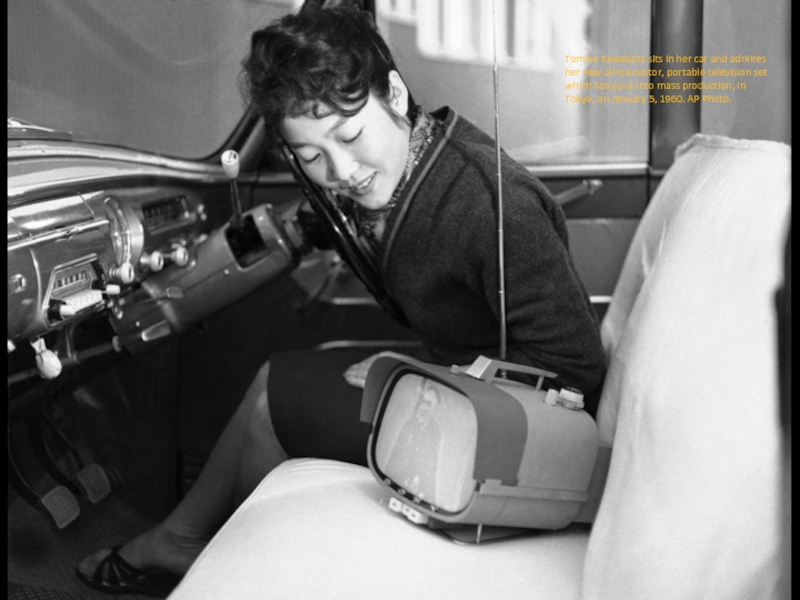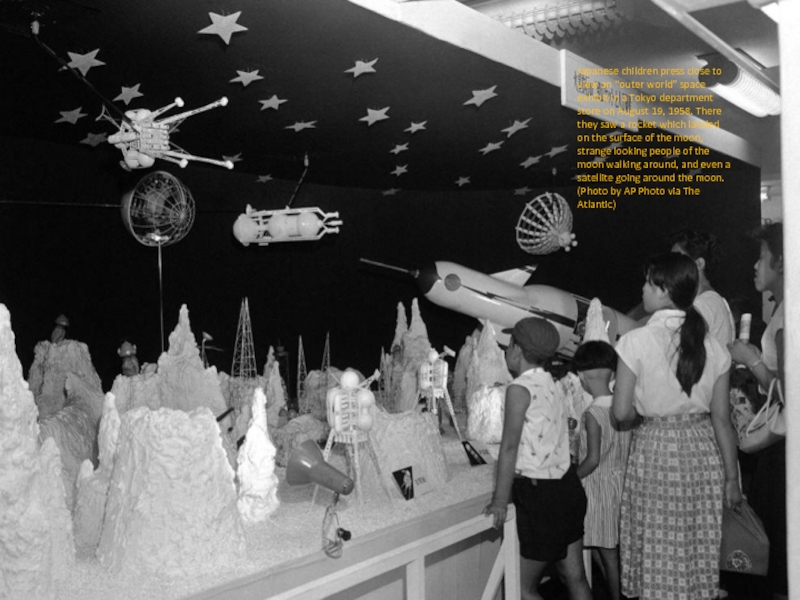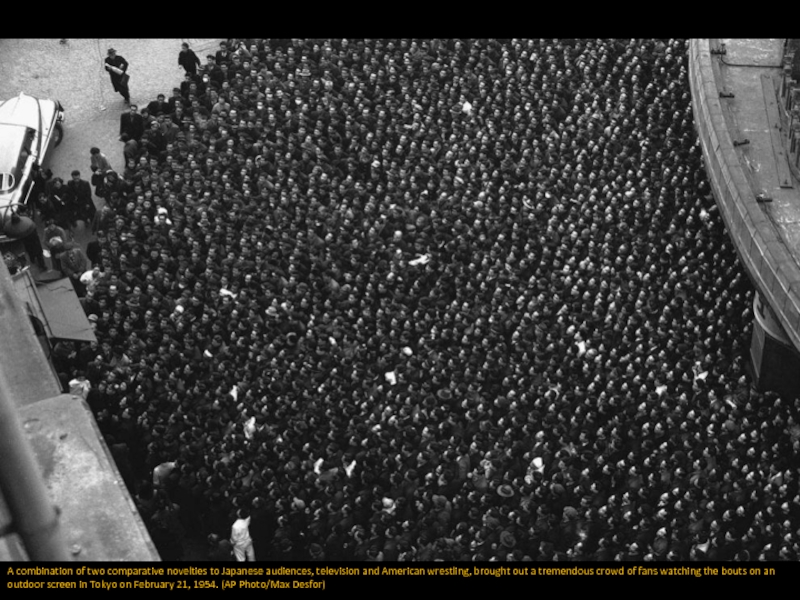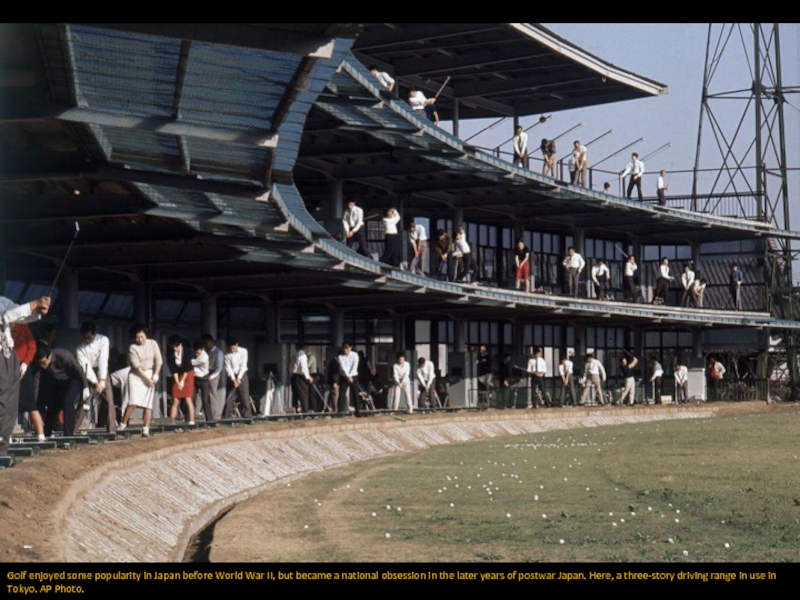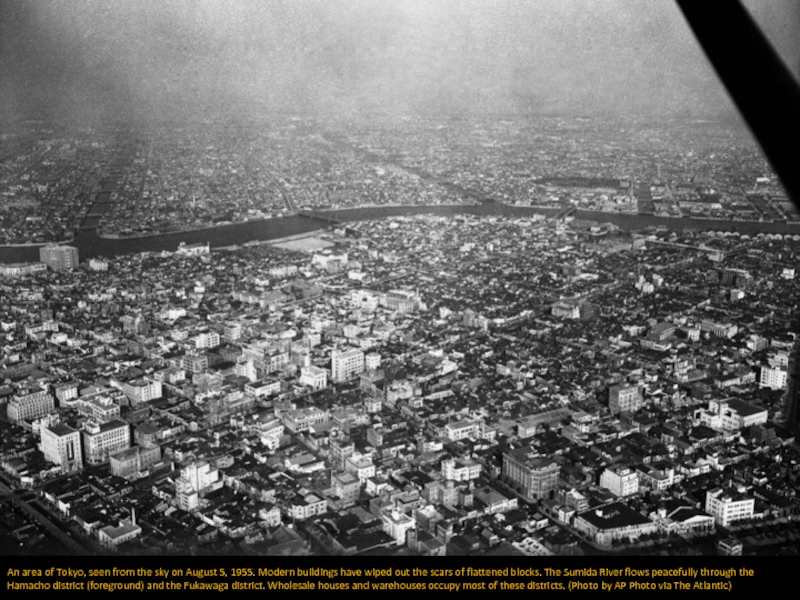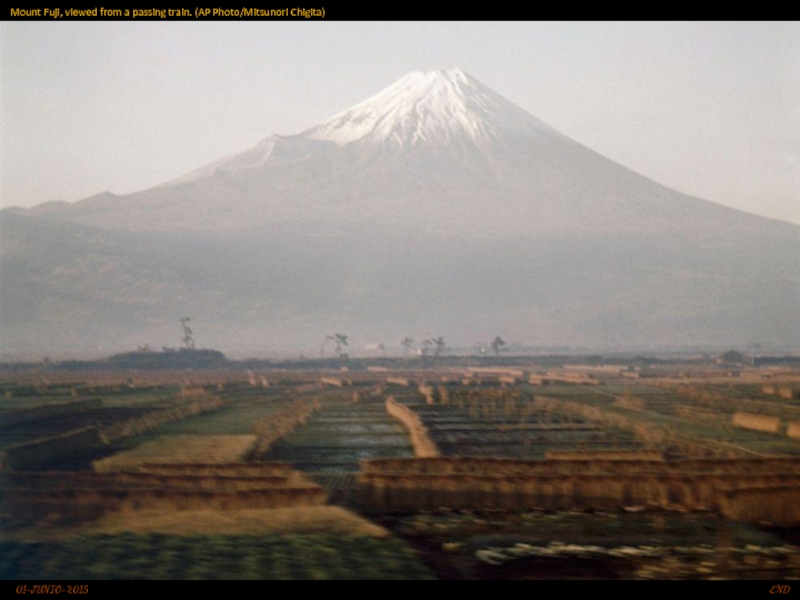Hula-Hoop craze that swept America and Japan in this October 30, 1958 picture. (AP Photo/Mitsunori Chigita)
- Главная
- Разное
- Дизайн
- Бизнес и предпринимательство
- Аналитика
- Образование
- Развлечения
- Красота и здоровье
- Финансы
- Государство
- Путешествия
- Спорт
- Недвижимость
- Армия
- Графика
- Культурология
- Еда и кулинария
- Лингвистика
- Английский язык
- Астрономия
- Алгебра
- Биология
- География
- Детские презентации
- Информатика
- История
- Литература
- Маркетинг
- Математика
- Медицина
- Менеджмент
- Музыка
- МХК
- Немецкий язык
- ОБЖ
- Обществознание
- Окружающий мир
- Педагогика
- Русский язык
- Технология
- Физика
- Философия
- Химия
- Шаблоны, картинки для презентаций
- Экология
- Экономика
- Юриспруденция
A young Japanese woman in a kimono takes part in the Hula-Hoop craze that swept America and Japan in this October 30, 1958 picture. (AP Photo/Mitsunori Chigita) презентация
Содержание
- 1. A young Japanese woman in a kimono takes part in the Hula-Hoop craze that swept America and Japan in this October 30, 1958 picture. (AP Photo/Mitsunori Chigita)
- 2. Women greet repatriated Japanese soldiers, formerly prisoners
- 3. On August 3, 1951, six years after
- 4. Engines of U.S. Air Force B-26 bombers
- 5. A Japanese girl carefully sorts cultured pearls
- 6. Children In the Snow, Japan, 1950’s, Unosuke Gamou
- 7. Industrial training experts watch a light bulb
- 8. Close up of the express engine Tsubame
- 9. Passengers on a train traveling from Tokyo
- 10. Pedestrians in Tokyo's Ginza district, circa 1950. (Photo by Evans/Three Lions/Hulton Archive/Getty Images)
- 11. A female bus conductor in Tokyo, circa 1955. (Photo by Three Lions/Hulton Archive/Getty Images)
- 12. A group of geisha girls being instructed by their teacher, circa 1955
- 13. A geisha laughing coquettishly with a male
- 14. Electrical appliances began entering Japanese kitchens from the mid 1950s.
- 15. Eiga Stars :: Portraits of Japanese Divas in Fan Magazines of the 1950s
- 16. To draw the public's attention to a
- 17. Photo of dancing under Japan's late-night ban in the 1950s
- 18. The heads all painted and the hair
- 19. Some 50 colorfully-garbed Buddhist monks march from
- 20. A female shoeshine in the Ginza district
- 21. Dining room of an orphanage in Osaka,
- 22. A Japanese woman removing weeds from a
- 23. A lens is inspected at Tokyo's Nikon
- 24. A sandwich girl who carries a sign
- 25. At the "America Fair". Left: Three kimono
- 26. Pro-communist demonstrators stone Japanese policemen at the
- 27. A dazed Japanese youth, his face bruised
- 28. Rice being symbolically planted in a paddy
- 29. A woman, in traditional dress of kimono
- 30. Japan's movie makers filming on the last
- 31. A scene from “Battleship Yamato” is filmed
- 32. A movie studio workman rigs up one
- 33. Two young girls in Kimonos in a
- 34. Tooru Ohira, the Japanese voice of television's
- 35. A young couple walking around in the Ginza district of Tokyo. 1959.
- 36. Beauty parlor in the Shmbashi district (Tokyo'’s
- 37. Spectators equipped with fans watch a baseball
- 38. On the island of Iwo Jima, Japanese
- 39. The transition from former enemy to ally
- 40. Women nurses of Japan's newly-formed Self-Defense Corps
- 41. A Shinto priest at the torii (gate)
- 42. Ten thousand photo flashbulbs lit up a
- 43. A stall selling fish at a market
- 44. Forty-five cameramen photograph the new Japanese cabinet
- 45. Micky Curtis, an Elvis Presley-style singer, strums
- 46. Two Geisha Girls, professional Japanese entertainers, practising
- 47. Children of repatriated families scoot around the
- 48. (AP Photo/Charles Gorry)
- 49. A group of men who work around
- 50. Interior of a Tokyo department store in
- 51. A huge replica of an H-bomb mushroom
- 52. Japanese dancers of the Schochiku dancing troupe
- 53. Survivors of the Hiroshima atomic bombing 10
- 54. College students employed as uniformed “pushers” cram
- 55. Soldiers practice bayonet tactics at the Kokubu
- 56. Dom DiMaggio of the Boston Red
- 57. Tomiko Kawabata sits in her car and
- 58. Japanese children press close to view an
- 59. A combination of two comparative novelties
- 60. Golf enjoyed some popularity in Japan
- 61. An area of Tokyo, seen from the
- 62. Mount Fuji, viewed from a passing train. (AP Photo/Mitsunori Chigita) END 01-JUNIO-2015
Слайд 2Women greet repatriated Japanese soldiers, formerly prisoners of war, on April
26, 1950. The men bear the ashes of their friends who died during their imprisonment. (Photo by AP Photo via The Atlantic)
Слайд 3On August 3, 1951, six years after an atomic bomb was
detonated above this spot in Hiroshima, a souvenir shop stands in the street near the shattered dome of the Industry Hall. The shop is operated by Kiyoshi Yoshikawa, who was injured in the blast. (Photo by AP Photo/Kyodo via The Atlantic)
Слайд 4Engines of U.S. Air Force B-26 bombers are revved up shortly
before taking off from Far East Air Force field in Japan on September 20, 1950, for combat missions in Korea. The twin-engine bombers were flying round-the-clock missions in support of United Nations ground forces. (Photo by AP Photo/U.S. Air Force)
Слайд 5A Japanese girl carefully sorts cultured pearls raised on Kokichi Mikimoto's
pearl farm near the tip of Japan's Ise peninsula on October 12, 1949. They are sorted according to color and size as well as shape. (Photo by AP Photo via The Atlantic)
Слайд 7Industrial training experts watch a light bulb machine drop bulbs down
to other workers who sort them according to defects at Tokyo Shibaura Electric Co. in Tokyo on January 25, 1951. (Photo by Arthur Curlis/AP Photo/U.S. Army via The Atlantic)
Слайд 8Close up of the express engine Tsubame in Tokyo station on
April 19, 1950. (AP Photo/Charles Gorry)
Слайд 9Passengers on a train traveling from Tokyo to Osaka go through
three minutes of calisthenics under leadership of a drill master, during a five-minute stopover at Hammamatsu on August 27, 1952 Photo by Max Desfor/AP Photo
Слайд 10Pedestrians in Tokyo's Ginza district, circa 1950. (Photo by Evans/Three Lions/Hulton
Archive/Getty Images)
Слайд 11A female bus conductor in Tokyo, circa 1955. (Photo by Three
Lions/Hulton Archive/Getty Images)
Слайд 13A geisha laughing coquettishly with a male guest, left, and a
geisha going home past a line of drying umbrellas in the alleyway, both circa 1955
Слайд 16To draw the public's attention to a new line of bathing
suits, a Tokyo department store used live models to show off the suits on June 5, 1950. The rain didn't bother the curious, and both the girls and the crowd seemed to like the idea of staring at each other through the glass. (Photo by AP Photo via The Atlantic)
Слайд 18The heads all painted and the hair glued on, this Tokyo
doll maker gets dolls ready for dressing in Tokyo on Jan. 26, 1950. Japan'’s doll makers are busy as girls day draws near. It is celebrated on April 3. (AP Photo/Charles Gorry)
Слайд 19Some 50 colorfully-garbed Buddhist monks march from the Buddhist goddess of
Mercy Statue in Kyoto, Japan on May 11, 1958, after the unveiling of a memorial to Allied dead of World War II on June 8.AP Photo.
Слайд 20A female shoeshine in the Ginza district of Tokyo, circa 1955.
(Photo by Orlando/Three Lions/Hulton Archive/Getty Images)
Слайд 21Dining room of an orphanage in Osaka, Japan, on February 19,
1951, where the 160 orphans were fed each day on food purchased by the Wolfhounds, the 27th Infantry Regiment of the U.S. Army. (Photo by Jim Pringle/AP Photo via The Atlantic)
Слайд 22A Japanese woman removing weeds from a rice field. (Photo by
Three Lions/Getty Images). Circa 1950
Слайд 23A lens is inspected at Tokyo's Nikon camera plant, on January
5, 1952. (Photo by Bob Schutz/AP Photo via The Atlantic)
Слайд 24A sandwich girl who carries a sign proclaiming a new type
of club where folks who work nights can come and enjoy themselves during the day, stops to adjust the bells on her ankles in Tokyo, March 19, 1950. The cafe hours are from 1 to 6 p.m. and Japanese beer sells for 320 yen. (AP Photo/Charles Gorry)
Слайд 25At the "America Fair". Left: Three kimono clad Japanese girls sit
at the base of a reproduction of the Statue of Liberty at the America Fair, which opened in Osaka, Japan on March 25, 1950. Right: A replica of the Mt. Rushmore memorial in South Dakota, one of the exhibits portraying U.S. history and notable scenes at the America Fair. (AP Photo/Charles Gorry, Library of Congress)
Слайд 26Pro-communist demonstrators stone Japanese policemen at the height of May Day
riots in downtown Tokyo on May 1, 1952. Casualties were numerous on both sides as police used tear gas, guns and clubs to beat back the waves of rioters. (Photo by Max Desfor/AP Photo via The Atlantic)
Слайд 27A dazed Japanese youth, his face bruised and bleeding, is led
from the riot scene by a policemen after pro-communist demonstrators were dispersed near the imperial palace grounds in Tokyo on May 1, 1952. (Photo by AP Photo via The Atlantic)
Слайд 28Rice being symbolically planted in a paddy field during a traditional
annual rice festival in Osaka, Japan, circa 1955. (Photo by Evans/Three Lions/Hulton Archive/Getty Images)
Слайд 29A woman, in traditional dress of kimono and platform shoes, boards
a bus, Japan, circa 1950. (Photo by Frederick L. Hamilton/Three Lions/Hulton Archive/Getty Images)
Слайд 30Japan's movie makers filming on the last day of the documentary
about the Battleship Yamato. Studio men load shells into the guns of a model of the Yamato as they get it ready for the big scene on June 8, 1953. Photo by Yuichi Ishizaki/AP
Слайд 31A scene from “Battleship Yamato” is filmed in the studio pool
of Japan's Shin-Toho Motion Picture Company on June 8, 1953. The background of sky and water ends at left and right, a camera crew in the foreground. (Photo by Yuichi Ishizaki/AP Photo via The Atlantic)
Слайд 32A movie studio workman rigs up one of the scale model
warships used in filming a battle scene in a Japanese documentary that tells the story of the last day of the battleship Yamato, on June 8, 1953. (Photo by Yuichi Ishizaki/AP Photo via The Atlantic)
Слайд 33Two young girls in Kimonos in a street near the almost
completed Tokyo Tower, July 1958. The tower is a TV and radio broadcasting antenna as well as a tourist attraction. (Photo by Keystone/Hulton Archive/Getty Images)
Слайд 34Tooru Ohira, the Japanese voice of television's Superman, watches actor George
Reeves closely while he dubs Japanese words for the show on July 7, 1959. Television has made a strong impression on the Japanese from Emperor Hirohito down. About 99 percent of Japanese TV shows are American, including the Emperor's favorite, “Superman”. (Photo by AP Photo via The Atlantic)
Слайд 36Beauty parlor in the Shmbashi district (Tokyo'’s number one geisha district)
as the girls get ready for the New Year parties and celebrations they will attend in the evening on Jan. 4, 1950. (AP Photo/Charles Gorry)
Слайд 37Spectators equipped with fans watch a baseball game between Waseda and
Keio Universities at Meiji Park, Tokyo, on June 1, 1954. At left Japanese counterpart of American cheerleader leads rooters whose fans are painted with school colors. (Photo by AP Photo via The Atlantic)
Слайд 38On the island of Iwo Jima, Japanese work crews cut up
the wreckage of a naval vessel which was almost completely covered along the sandy beach on February 21, 1954. After a nine-year absence, the Japanese are back on the island of Iwo Jima, but as salvage workers. (Photo by AP Photo via The Atlantic)
Слайд 39The transition from former enemy to ally is evidenced by these
GI-clad Japanese army volunteers during maneuvers at the Fuji Army School outside of Tokyo on May 15, 1957. (Photo by George Sweers/AP Photo via The Atlantic)
Слайд 40Women nurses of Japan's newly-formed Self-Defense Corps man an aid station
on Hokkaido, Japan, during maneuvers on October 20, 1955. (Photo by AP Photo via The Atlantic)
Слайд 41A Shinto priest at the torii (gate) of Itsukushima Shrine at
low tide on Itsukushima Island, Japan, circa 1955. (Photo by Three Lions/Hulton Archive/Getty Images)
Слайд 42Ten thousand photo flashbulbs lit up a new television station and
tower in downtown Tokyo on March 26, 1955, in what was called the biggest flash shot in the world. Radio Tokyo, in connection with a local flashbulb company, exploded the 10,000 bulbs on its new 516-foot television antenna to remind Tokyoites that it would begin telecasting on April 1. Thousands of camera fans crowded upper story windows and roof tops near the TV station to photograph the spectacle. (Photo by AP Photo via The Atlantic)
Слайд 43A stall selling fish at a market in Shinjuku, Tokyo. (Photo
by Orlando /Three Lions/Getty Images). Circa 1955
Слайд 44Forty-five cameramen photograph the new Japanese cabinet at the Prime Minister's
official residence in downtown Tokyo on December 17, 1954.(Photo by AP Photo via The Atlantic)
Слайд 45Micky Curtis, an Elvis Presley-style singer, strums his guitar and sings
just beyond reach of female admirers in the Nichigeki Theater in Tokyo on February 18, 1958. AP Photo.
Слайд 46Two Geisha Girls, professional Japanese entertainers, practising their art; one is
playing a samisen, a traditional Japanese stringed instrument, circa 1950. (Photo by Three Lions)
Слайд 47Children of repatriated families scoot around the deck of the Koan
Maru as their parents prepare to disembark at Maizuru Bay, Japan, on March 24, 1953. Photo by Y. Jackson Ishizaki/AP
Слайд 49A group of men who work around the canals of Tokyo
and Yokohama meet for a late evening snack. (Photo by Orlando /Three Lions/Getty Images). Circa 1950
Слайд 50Interior of a Tokyo department store in 1959, where a Japanese
man wearing Geta, traditional wooden footwear, looks up at a poster-sized portrait of Abraham Lincoln hanging with two other posters about Lincoln's life. (Photo by Library of Congress via The Atlantic)
Слайд 51A huge replica of an H-bomb mushroom cloud is carried through
the streets of Tokyo, Japan, on May 1, 1957, in protest of a planned British H-bomb test at Christmas Islands. (Photo by AP Photo via The Atlantic)
Слайд 52Japanese dancers of the Schochiku dancing troupe rehearse one of their
new numbers in the “natsu-no-odori” summer dance scene which they performed at the Kokusai Theater in Tokyo on July 11, 1958. (Photo by Mitsunori Chigita/AP Photo via The Atlantic)
Слайд 53Survivors of the Hiroshima atomic bombing 10 years earlier, face newsmen
and photographers at the Mitchel Air Force base on Long Island, New York, on May 9, 1955. Twenty-five Japanese girls, scarred by the blast, made the 6,700. Photo by Jacob Harris/AP
Слайд 54College students employed as uniformed “pushers” cram commuters into railroad passenger
cars in Tokyo. (Photo by Library of Congress via The Atlantic)
Слайд 55Soldiers practice bayonet tactics at the Kokubu Army Camp in Japan
on May 22, 1957. (AP Photo/George Sweers
Слайд 56 Dom DiMaggio of the Boston Red Sox gets set to swing
during an exhibition game between the American All-Stars and the Yomiuri Giants in Japan on October 20, 1951. AP Photo
Слайд 57Tomiko Kawabata sits in her car and admires her new all-transistor,
portable television set which Sony put into mass production, in Tokyo, on January 5, 1960. AP Photo.
Слайд 58Japanese children press close to view an “outer world” space exhibit
in a Tokyo department store on August 19, 1958. There they saw a rocket which landed on the surface of the moon, strange looking people of the moon walking around, and even a satellite going around the moon. (Photo by AP Photo via The Atlantic)
Слайд 59 A combination of two comparative novelties to Japanese audiences, television and
American wrestling, brought out a tremendous crowd of fans watching the bouts on an outdoor screen in Tokyo on February 21, 1954. (AP Photo/Max Desfor)
Слайд 60 Golf enjoyed some popularity in Japan before World War II, but
became a national obsession in the later years of postwar Japan. Here, a three-story driving range in use in Tokyo. AP Photo.
Слайд 61An area of Tokyo, seen from the sky on August 5,
1955. Modern buildings have wiped out the scars of flattened blocks. The Sumida River flows peacefully through the Hamacho district (foreground) and the Fukawaga district. Wholesale houses and warehouses occupy most of these districts. (Photo by AP Photo via The Atlantic)
